NVIDIA GeForce GTX 780 Ti in 2-way SLI Review
by XbitLabs Team
Last update 27 May 2021
XbitLabs participates in several affiliate programs. If you click links on our website and make a purchase, we may earn a commision. Learn More
A set of two high-end graphics cards must be a great performer. We had tested SLI setup of two GeForce GTX 780 Ti and now we can tell about our decision. Is this configuration a good choice from price-performance point of view? Where is hidden dangers of it? Read the review!
Having tested three original GeForce GTX 780 Ti graphics cards from Zotac, MSI and Inno3D, we couldn’t help checking them out in SLI configurations. We were not able to combine all of them into a single subsystem though, just because we only had two of them at one time. Testing a 3-way SLI configuration (with a 3-monitor setup) is still on our plans, but today we want to share with you the results of our testing a SLI configuration built out of two GTX 780 Ti cards in comparison with five opponents, two of which are dual-GPU solutions.
Contents
Testbed and Methods
Here is the list of components we use in our testbed.
- Mainboard: Intel Siler DX79SR (Intel X79 Express, LGA 2011, BIOS 0590 dated 17.07.2013)
- CPU: Intel Core i7-3970X Extreme Edition 3.5/4.0 GHz (Sandy Bridge-E, C2, 1.1 V, 6x256KB L2 cache, 15MB L3 cache)
- CPU cooler: Phanteks PH-TC14P (2xCorsair AF140 fans, 900 RPM)
- Thermal grease: ARCTIC MX-4
- Graphics cards:
- AMD Radeon HD 7990 (2x3GB, 1100/6300 MHz)
- Nvidia GeForce GTX 690 (2x2GB, 1006-1111/7208 MHz)
- Nvidia GeForce GTX Titan (6GB, 837-876/6008 MHz and 1006-1045/7200 MHz)
- Inno3D iChill GeForce GTX 780 Ti HerculeZ X3 Ultra (3GB, 1006-1072/7200 MHz)
- Nvidia GeForce GTX 780 Ti (3GB, 1006-1058/7200 MHz)
- ASUS ROG MARS 760 (2x2GB, 1006-1072/6008 MHz)
- AMD Radeon R9 290X (4GB, 1000/5000 MHz)
- System memory: DDR3 4x8GB G.
 SKILL TridentX F3-2133C9Q-32GTX (XMP: 2133 MHz, 9-11-11-31, 1.6 volts)
SKILL TridentX F3-2133C9Q-32GTX (XMP: 2133 MHz, 9-11-11-31, 1.6 volts) - System disk: SSD 256GB Crucial m4 (SATA 6 Gbit/s, CT256M4SSD2, BIOS v0009)
- Games/software disk: Western Digital VelociRaptor (SATA-2, 300 GB, 10000 RPM, 16 MB cache, NCQ) in a Scythe Quiet Drive 3.5″ enclosure
- Backup disk: Samsung Ecogreen F4 HD204UI (SATA-2, 2 TB, 5400 RPM, 32 MB cache, NCQ)
- Sound card: Auzen X-Fi HomeTheater HD
- Computer case: Antec Twelve Hundred (front panel: three Noiseblocker NB-Multiframe S-Series MF12-S2 fans at 1020 RPM; back panel: two Noiseblocker NB-BlackSilentPRO PL-1 fans at 1020 RPM; top panel: one preinstalled 200mm fan at 400 RPM)
- Control & monitoring panel: Zalman ZM-MFC3
- Power supply: Corsair AX1200i (1200 W), 120mm fan
- Monitor: 27″ (DVI-I, 2560×1440, 60 Hz)
Our SLI configuration was built out of a reference GeForce GTX 780 Ti (in the mainboard’s top PCIe slot) and an original GTX 780 Ti from Inno3D:
The clock rates of the reference 780 Ti are increased to those of the Inno3D. Two dual-GPU cards from AMD and Nvidia are included into this testing for the comparison’s sake:
Two dual-GPU cards from AMD and Nvidia are included into this testing for the comparison’s sake:
Their GPUs are overclocked by about 100 MHz. The memory clock rate of the Radeon HD 7990 is increased to the maximum of 6300 MHz. The memory frequency of the GeForce GTX 690 is set at 7200 MHz, the same as with the GTX 780 Ti configuration.
Besides the dual-GPU solutions, we also include an Nvidia GeForce GTX Titan 6GB (at 1006-1045/7200 MHz) and an AMD Radeon R9 290X 4GB (at its default clock rates and 70% fan speed to avoid GPU throttling).
So, we’ve got quite a comprehensive selection of graphics solutions. We only miss a CrossFireX tandem based on Radeon R9 290X cards but their availability is still low, so we have to postpone such testing for now.
Besides the abovementioned cards, we also have a dual-processor ASUS ROG MARS 760 2x2GB working at its default clock rates:
This model is no competitor to the GeForce GTX 780 Ti and we have already compared it with the other cards, yet it will help make our picture more complete.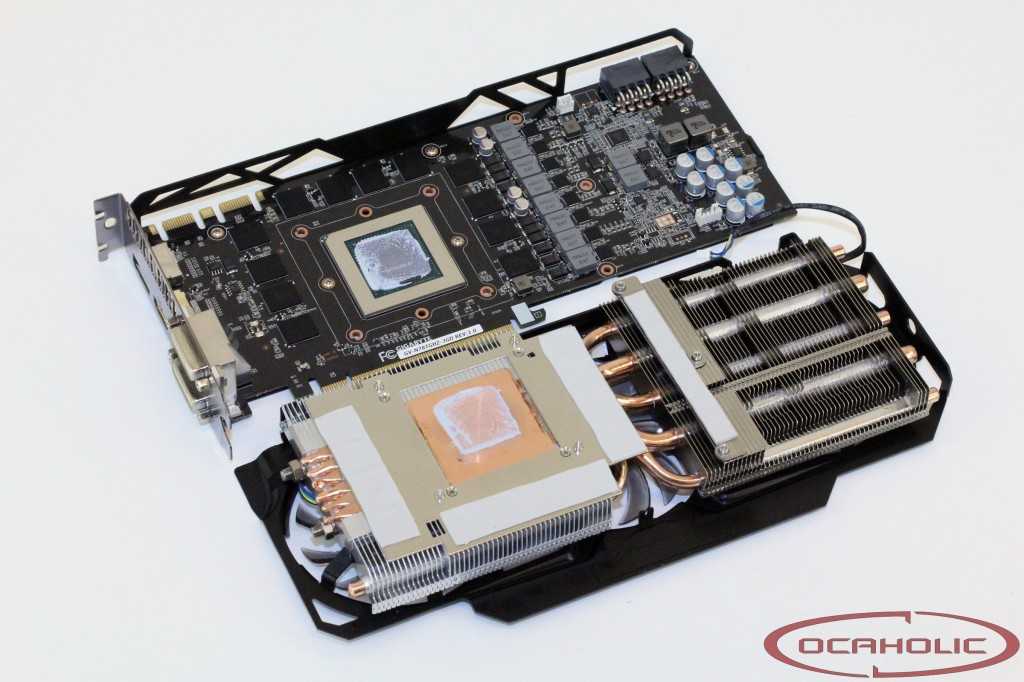
In order to lower the dependence of the graphics cards’ performance on the overall platform speed, we overclocked our 32nm six-core CPU to 4.8 GHz by setting its frequency multiplier at x48 and enabling Load-Line Calibration. The CPU voltage was increased to 1.38 volts in the mainboard’s BIOS:
Hyper-Threading was turned on. We used 32 GB of system memory at 2.133 GHz with timings of 9-11-11-20_CR1 and voltage of 1.6125 volts.
The testbed ran Microsoft Windows 7 Ultimate x64 SP1 with all critical updates installed. We used the following drivers:
- Intel Chipset Drivers – 9.4.4.1006 WHQL dated 21.09.2013
- DirectX End-User Runtimes, dated 30 November 2010
- AMD Catalyst 13.12 WHQL (13.251.0.0) dated 18.12.2013
- Nvidia GeForce 331.93 Beta from 27.11.2013 for the GeForce GTX series and GeForce 334.67 Beta from 27.01.2014 for the GeForce GTX Titan
We benchmarked the graphics cards’ performance at two display resolutions: 1920×1080 and 2560×1440 pixels. There were two visual quality modes: “Quality+AF16x” means the default texturing quality in the drivers + 16x anisotropic filtering whereas “Quality+ AF16x+MSAA 4x(8x)” means 16x anisotropic filtering and 4x or 8x antialiasing. In some games we use antialiasing algorithms other than MSAA as indicated below and in the diagrams. We enabled anisotropic filtering and full-screen antialiasing from the game’s menu. If the corresponding options were missing, we changed these settings in the Control Panels of the Catalyst and GeForce drivers. We also disabled Vsync there. There were no other changes in the driver settings.
There were two visual quality modes: “Quality+AF16x” means the default texturing quality in the drivers + 16x anisotropic filtering whereas “Quality+ AF16x+MSAA 4x(8x)” means 16x anisotropic filtering and 4x or 8x antialiasing. In some games we use antialiasing algorithms other than MSAA as indicated below and in the diagrams. We enabled anisotropic filtering and full-screen antialiasing from the game’s menu. If the corresponding options were missing, we changed these settings in the Control Panels of the Catalyst and GeForce drivers. We also disabled Vsync there. There were no other changes in the driver settings.
The graphics cards were tested in two benchmarks and 13 games updated to the latest versions.
- 3DMark (2013) (DirectX 9/11) – version 1.2.250.0: Cloud Gate, Fire Strike and Fire Strike Extreme scenes.
- Unigine Valley Bench (DirectX 11) – version 1.0: maximum visual quality settings, 16x AF and/or 4x MSAA, 19201080.
- Total War: SHOGUN 2 – Fall of the Samurai (DirectX 11) version 1.
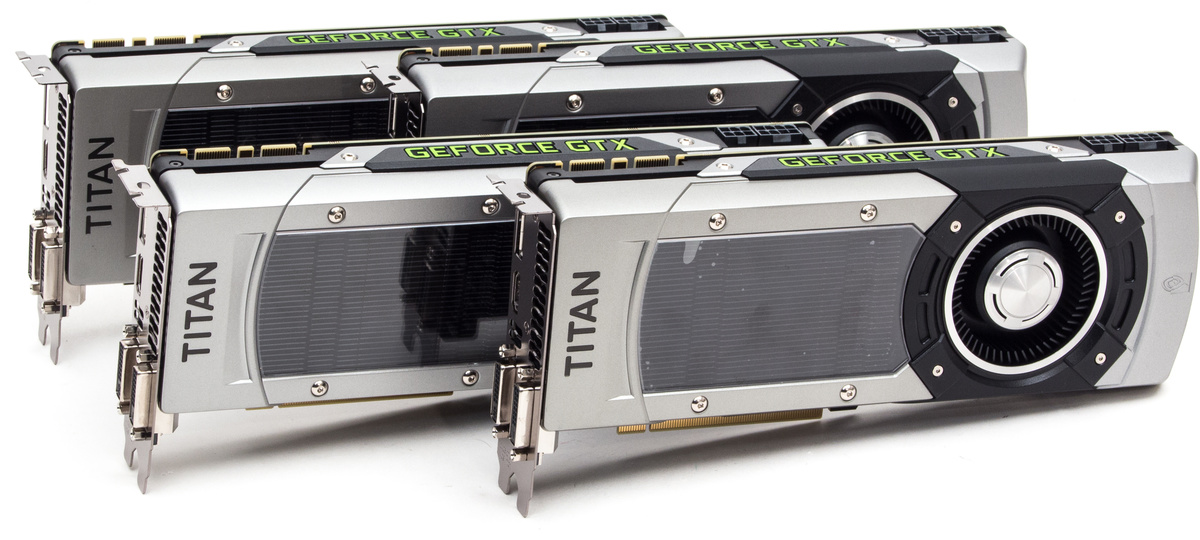 1.0: integrated benchmark (the Sekigahara battle) with maximum visual quality settings and 8x MSAA.
1.0: integrated benchmark (the Sekigahara battle) with maximum visual quality settings and 8x MSAA. - Sniper Elite V2 Benchmark (DirectX 11) – version 1.05: we used Adrenaline Sniper Elite V2 Benchmark Tool v1.0.0.2 BETA with maximum graphics quality settings (“Ultra” profile), Advanced Shadows: HIGH, Ambient Occlusion: ON, Stereo 3D: OFF, Supersampling: OFF, two sequential runs of the test.
- Sleeping Dogs (DirectX 11) – version 1.5: we used Adrenaline Sleeping Dogs Benchmark Tool v1.0.2.1 with maximum image quality settings, Hi-Res Textures pack installed, FPS Limiter and V-Sync disabled, two consecutive runs of the built-in benchmark with quality antialiasing at Normal and Extreme levels.
- Hitman: Absolution (DirectX 11) version 1.0.447.0: built-in test with Ultra settings, enabled tessellation, FXAA and global lighting.
- Crysis 3 (DirectX 11) – version 1.2.0.1000: maximum visual quality settings, Motion Blur – Medium, lens flares – on, FXAA and MSAA 4x, two consecutive runs of a scripted scene from the beginning of the “Swamp” mission (110 seconds long).
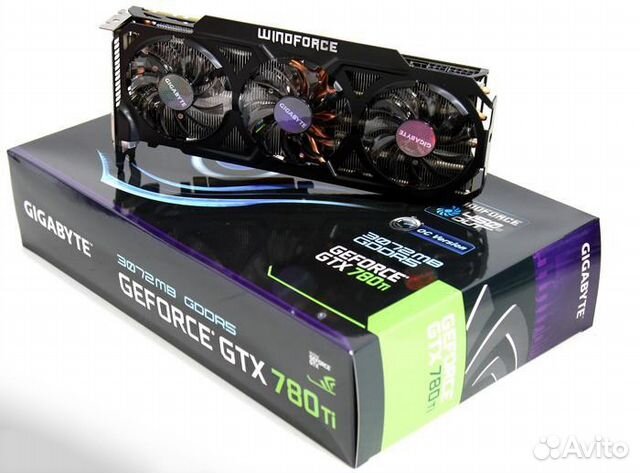
- Tomb Raider (2013) (DirectX 11) – version 1.1.748.0: we used Adrenaline Benchmark Tool, all image quality settings set to “Ultra”, V-Sync disabled, FXAA and 2x SSAA antialiasing enabled, TessFX technology activated, two consecutive runs of the in-game benchmark.
- BioShock Infinite (DirectX 11) – version 1.1.24.21018: we used Adrenaline Action Benchmark Tool with “Ultra” and “Ultra+DOF” quality settings, two consecutive runs of the in-game benchmark.
- Metro: Last Light (DirectX 11) version 1.0.0.15: we used the built-in benchmark for two consecutive runs of the D6 scene. All image quality and tessellation settings were at “Very High”, Advanced PhysX technology enabled, with and without SSAA antialiasing.
- GRID 2 (DirectX 11) – version 1.0.85.8679: we used the built-in benchmark, the visual quality settings were all at their maximums, the tests were run with and without MSAA 8x antialiasing with eight cars on the Chicago track.

- Company of Heroes 2 (DirectX 11) – version 3.0.0.11811: two consecutive runs of the integrated benchmark at maximum image quality and physics effects settings.
- Total War: Rome II (DirectX 11) version 1.8.0 build 8891.481024: Extreme quality, V-Sync disabled, SSAA enabled, two consecutive runs of the integrated benchmark.
- Batman: Arkham Origins (DirectX 11) version 1.0 update 8: Ultra visual quality, V-Sync disabled, all the effects enabled, all DX11 Enhanced features enabled, Hardware Accelerated PhysX = Normal, two consecutive runs of the in-game benchmark.
- Battlefield 4 (DirectX 11) – version 1.4: Ultra settings, two successive runs of a scripted scene from the beginning of the “Tashgar” mission (110 seconds long).
We publish the bottom frame rate for games that report it. Each test was run twice, the final result being the best of the two if they differed by less than 1%. If we had a larger difference, we reran the test at least once again to get repeatable results.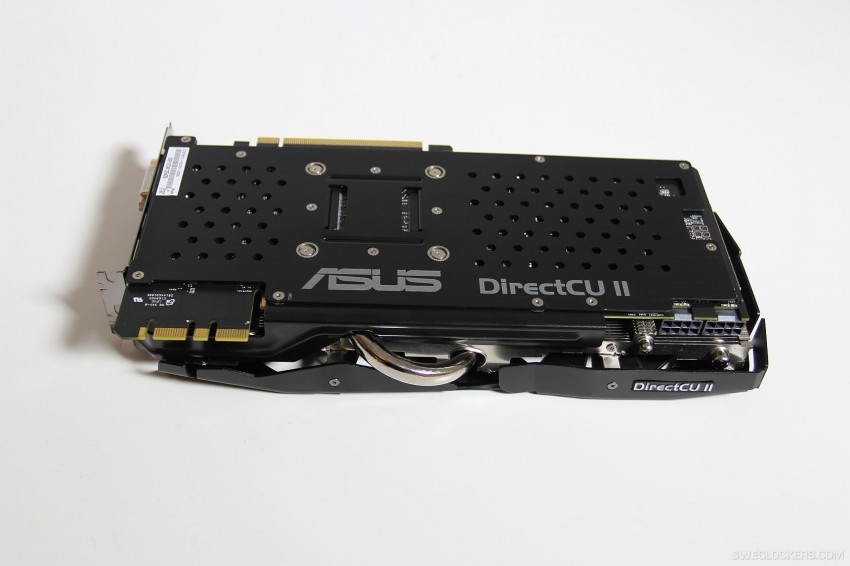
Performance
The results of the 2-way SLI configuration (built out of two GeForce GTX 780 Ti cards) and of both dual-GPU cards from Nvidia are indicated in turquoise. The single-GPU GeForce GTX cards are green and the AMD-based cards are red.
Considering the high performance and price ($1500 and more) of the GeForce GTX 780 Ti tandem, we’re going to focus on the resource-consuming mode (2560×1440 with different types of antialiasing). We guess no one would build such an advanced graphics subsystem to play at a resolution lower than 2560×1440 and without AA. Still, the diagrams show all of our test results.
3DMark (2013)
The GeForce GTX 780 Ti SLI tandem is up to 70% efficient at the highest settings, outperforming its closest opponent, the dual-processor Nvidia GeForce GTX 690, by 51%. So we seem to have built a very fast SLI configuration…
Unigine Valley Bench
The GeForce GTX 780 Ti is the same 75% faster than the single such card in Unigine Valley as well. The difference from the GeForce GTX 690 is smaller than in 3DMark (2012) at 42%.
The difference from the GeForce GTX 690 is smaller than in 3DMark (2012) at 42%.
Total War: SHOGUN 2 – Fall of the Samurai
This game’s engine runs smoothly on multi-GPU configurations, both Nvidia SLI and AMD CrossFireX. Here’s yet another proof:
Although the game is nearly 3 years old, it is still a heavy load even for top-end graphics solutions at 2560×1440 with maximum visual quality settings. The two GeForce GTX 780 Ti in SLI mode show their best here, beating the single GTX 780 Ti by 86% and the dual-processor GTX 690 by 48%!
Sniper Elite V2 Benchmark
The 2-way SLI tandem built out of GeForce GTX 780 Ti cards is impressive in this game, too.
The two GTX 780 Ti cards are 85% faster than the single GTX 780 Ti and 45% faster than the second-best GTX 690. The bottom speed is rather low with each of the tested graphics solutions, though.
Sleeping Dogs
Top-end graphics solutions can only show their full power in the most resource-consuming test mode here./cdn.vox-cdn.com/uploads/chorus_asset/file/14219252/nvidiagtx1660ti.jpg)
At 2560×1440 with high-level antialiasing the two GeForce GTX 780 Ti cards are as much as 82% ahead of the single GTX 780 Ti and also beat the Nvidia GeForce GTX 690 (by 47%) and AMD Radeon HD 7990 (by 78%).
Hitman: Absolution
Although a CPU-dependent game, Hitman: Absolution benefits from enabling SLI on our two top-end graphics cards.
The two GK110-based cards are up to 79% faster than the single such card here. As opposed to the previous tests, the AMD Radeon HD 7990 is second, outpacing the GeForce GTX 690. It is still 47% slower than the leader, though.
Crysis 3
This is such a heavy application that the effect from adding a second GeForce GTX 780 Ti can be seen in every test mode and at every display resolution.
It is at 2560×1440 with 4x MSAA that the SLI tandem enjoys its biggest advantage over the single card – up to 85%. It is also 47% ahead of the dual-processor Nvidia GeForce GTX 690 and 69% ahead of the AMD Radeon HD 7990.
Tomb Raider (2013)
We see the same picture here as in the previous test.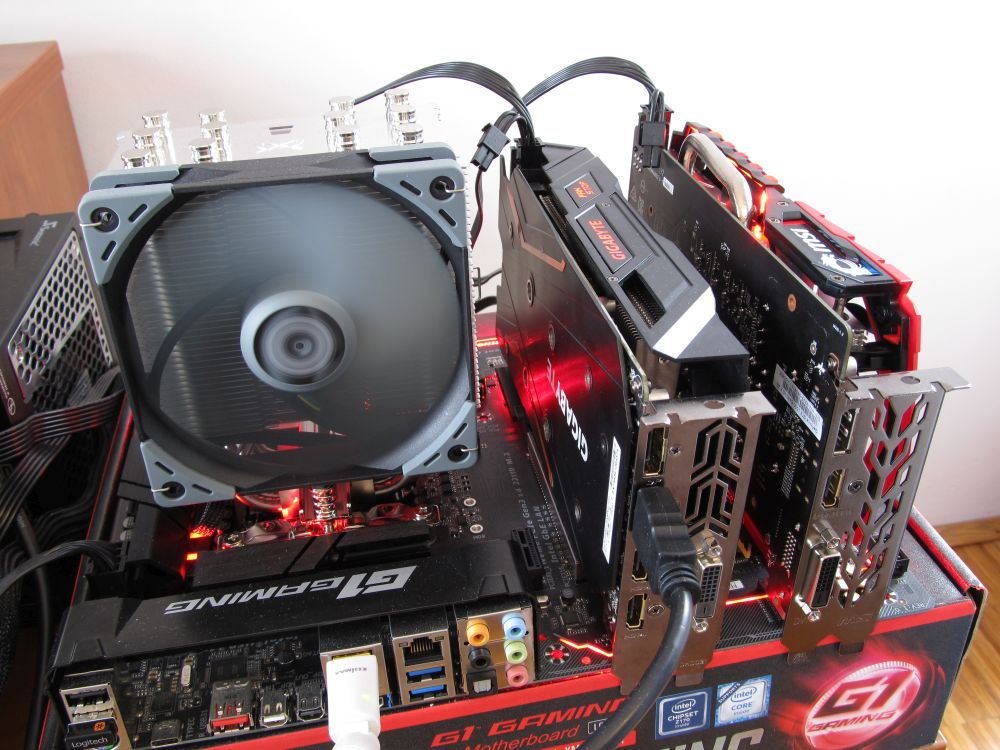
The SLI tandem ensures performance benefits in every test mode, its maximum efficiency amounting to 90% (one of the best results in this test session). The dual-processor cards are both 50-60% behind the leader.
BioShock Infinite
Like all single-GPU Nvidia-based products, the 2-way GeForce GTX 780 Ti SLI configuration has a very low bottom speed in this game. The AMD-based cards aren’t much better in this respect, though.
The SLI technology is less efficient in BioShock Infinite than in the three previous benchmarks. Anyway, the two GeForce GTX 780 Ti cards are faster than the single such card by up to 72% and also beat the GeForce GTX 690 (by 44%) and Radeon HD 7990 (by 52%).
Metro: Last Light
First, let’s check out the cards with the Advanced PhysX option turned on.
The SLI technology has always been rather inefficient in this game, yet the two GeForce GTX 780 Ti turn out to be 68% faster than the single card. The SLI tandem is also 50% ahead of the GTX 690 and twice as fast as the Radeon HD 7990.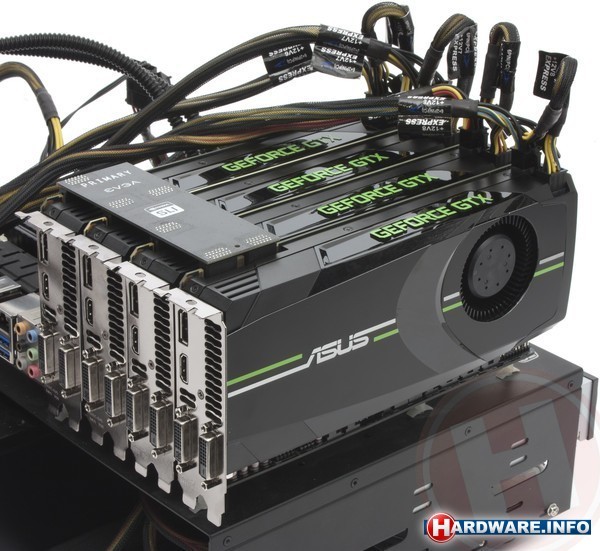
AMD’s Radeon HD 7990 and R9 290X feel much better with the extra physics effects turned off, though.
Anyway, the GeForce GTX 780 Ti tandem is up to 56% ahead of the dual-processor solutions. Like in the resource-consuming Crysis 3, our top-end SLI configuration helps make the gameplay much smoother.
GRID 2
One GeForce GTX 780 Ti is quite enough to ensure a high frame rate in GRID 2. That’s why adding a second card only improves performance by 55% at best. The SLI tandem is only 12-36% ahead of the GeForce GTX 690 and 5-28% ahead of the AMD Radeon HD 7990.
Company of Heroes 2
To see the effect from the SLI technology in this game, we need to choose the maximum visual quality settings.
So, at 2560×1440 with maximum antialiasing the GeForce GTX 780 Ti SLI tandem is 80% faster than the single GTX 780 Ti, 80% faster than the GeForce GTX 690 and 64% faster than the AMD Radeon HD 7990. Why? Well, this game doesn’t work well with multi-GPU technologies, so you have to enable AFR mode and put up with screen flickering.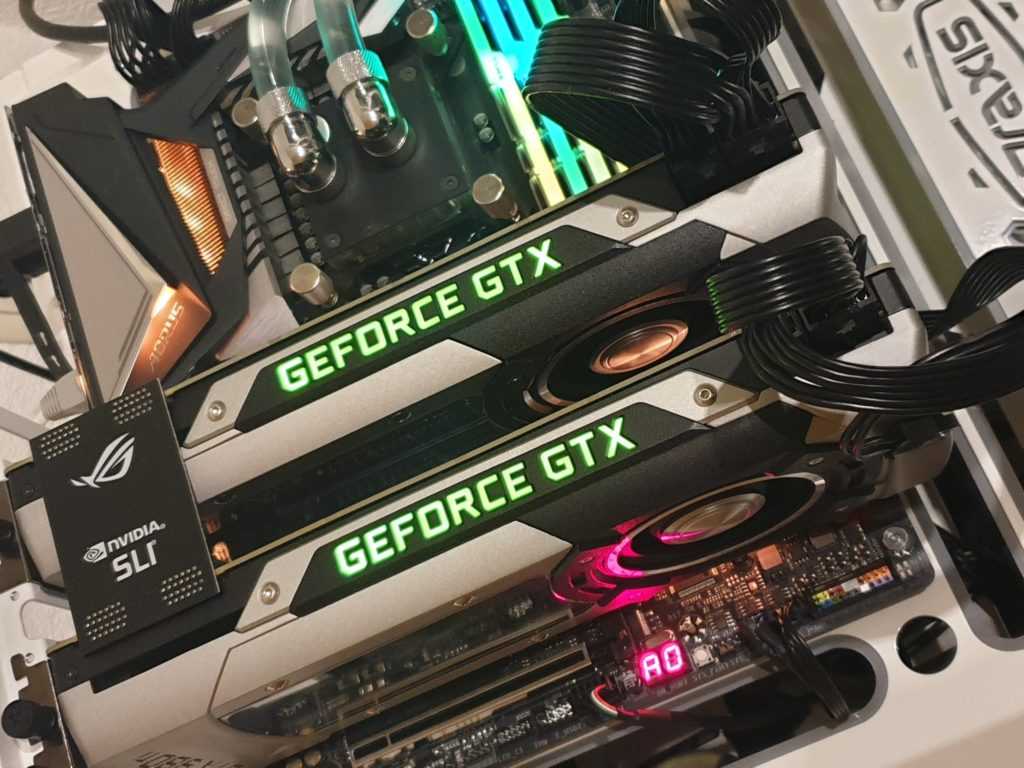 Of course, the frame rate goes up, but the game becomes downright unplayable. There is no point in building a SLI tandem out of two GeForce GTX 780 Ti cards for Company of Heroes 2.
Of course, the frame rate goes up, but the game becomes downright unplayable. There is no point in building a SLI tandem out of two GeForce GTX 780 Ti cards for Company of Heroes 2.
Total War: Rome II
Our SLI tandem is useless in this game, too.
Batman: Arkham Origins
The 2-way GeForce GTX 780 Ti SLI can ensure a 73% performance boost over the single GTX 780 Ti in the most resource-consuming mode of this game. It is also far ahead of the dual-processor cards here.
Battlefield 4
The two GeForce GTX 780 Ti cards in SLI mode aren’t very fast even at 2560×1440 with 4x antialiasing.
Our SLI tandem is only up to 34% faster than the single GTX 780 Ti. It also beats the GeForce GTX 690 and barely outperforms the AMD Radeon HD 7990. The developers of the GeForce driver (or of the game itself) seem to have some work to do yet.
Performance Summary
Let’s check out the efficiency of Nvidia’s multi-GPU technology first. Here’s the 2-way SLI tandem compared to the single GeForce GTX 780 Ti at the same clock rates.
Depending on the resolution and visual quality settings, adding a second GeForce GTX 780 Ti card may ensure a performance boost up to 90%, if the game is supported properly by the graphics driver. So when everything works smoothly, the performance gain is almost twofold. On the other hand, there are cases where the SLI technology is inefficient or doesn’t work at all. It depends on the particular game whether building such a tandem is worthwhile.
Next, we compare the two GeForce GTX 780 Ti cards with the dual-processor GeForce GTX 690. Both use the same driver and SLI technology.
Except for a few games, the 2-way GeForce GTX 780 Ti SLI is much faster than the GeForce GTX 690. The average gap is 48% at the high visual quality settings.
The SLI tandem is also an average 56% ahead of the AMD Radeon HD 7990 at the same settings:
The SLI configuration loses a couple of tests either because the game is limited by the speed of the platform (Hitman: Absolution) or doesn’t work smoothly with SLI (Battlefield 4).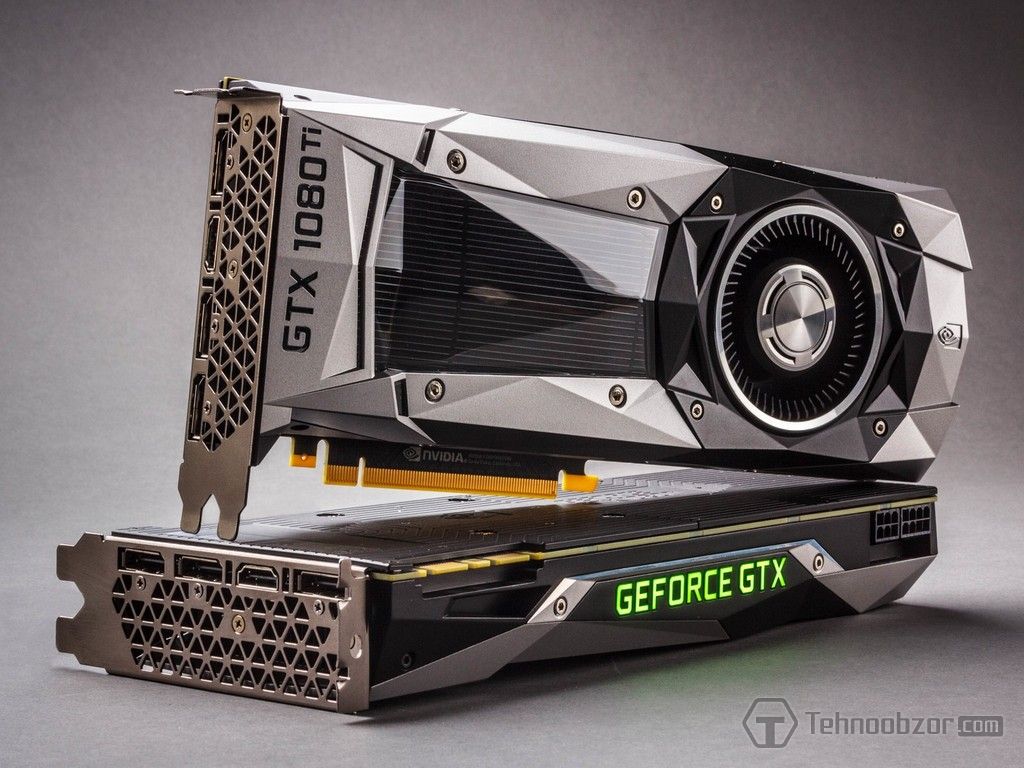 Overall, the 2-way GeForce GTX 780 Ti SLI enjoys a larger advantage over the AMD Radeon HD 7990 than over the GeForce GTX 690.
Overall, the 2-way GeForce GTX 780 Ti SLI enjoys a larger advantage over the AMD Radeon HD 7990 than over the GeForce GTX 690.
Power Consumption
We measured the power consumption of computer systems with different graphics cards using a multifunctional panel Zalman ZM-MFC3 which can report how much power a computer (the monitor not included) draws from a wall socket. There were two test modes: 2D (editing documents in Microsoft Word and web surfing) and 3D (the intro scene of the Swamp level from Crysis 3 running four times in a loop at 2560×1440 with maximum visual quality settings but without MSAA). Here are the results.
The computer with our 2-way GeForce GTX 780 Ti SLI configuration needs about 800 watts of power at peak loads, so you’d need at least a 850W PSU for it. This is 116 watts more than required by the computer with an overclocked AMD Radeon HD 7990. The Nvidia GeForce GTX 690 system needs 144 watts less and the system with one GeForce GTX 780 Ti (working at the same clock rates) needs 217 watts less.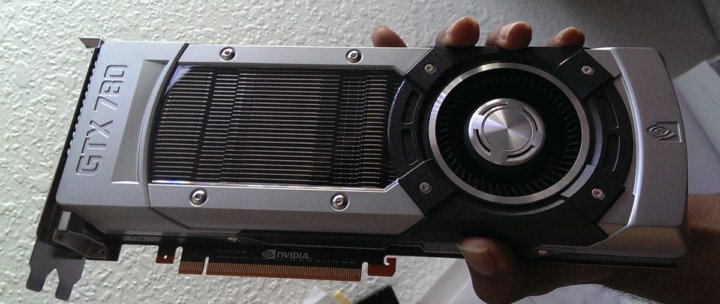
Conclusion
A SLI tandem built out of two GeForce GTX 780 Ti cards is one of the fastest graphics subsystems available today and is perfect for the most resource-consuming games and benchmarks. It will cost you about as much money as a whole midrange PC but its graphics performance is going to be unprecedented. It is only necessary for the game to support SLI technology and for the Nvidia GeForce driver to have appropriate optimizations. Of course, as is always the case with products of such a high class, you need a high-performance platform, a high-wattage PSU and a roomy computer case. In the best scenario, the two GeForce GTX 780 Ti will almost double the frame rate of a single such card. Crysis 3, Metro: Last Light and Tomb Raider indicate that such an advanced graphics subsystem won’t be overkill. So if you can afford a couple of GTX 780 Ti cards and prefer premium-quality graphics, you should certainly try combining them into a 2-way SLI tandem.
GeForce GTX 780 Ti vs GeForce GTX 880M SLI Graphics cards Comparison
In this comparison between GeForce GTX 780 Ti and GeForce GTX 880M SLI you will find out which graphics card performs better in today’s games. Bear in mind that third-party versions may have more efficient cooling and higher clock speeds. This will increase cards’ performance, though not by much. In addition to raw power you should also take into account the dimensions. Thicker models simply will not fit into a small mini-ITX case. The resolution of your monitor also affects the choice, since 4K gameplay requires a more powerful GPU. And don’t overspend on the graphics card. Other parts of your build may also need to be upgraded, save some money for the CPU or power supply. For some people GeForce GTX 780 Ti will be the best choice, for others GeForce GTX 880M SLI will be their preference. Study the comparison tables below and make your choice.
Bear in mind that third-party versions may have more efficient cooling and higher clock speeds. This will increase cards’ performance, though not by much. In addition to raw power you should also take into account the dimensions. Thicker models simply will not fit into a small mini-ITX case. The resolution of your monitor also affects the choice, since 4K gameplay requires a more powerful GPU. And don’t overspend on the graphics card. Other parts of your build may also need to be upgraded, save some money for the CPU or power supply. For some people GeForce GTX 780 Ti will be the best choice, for others GeForce GTX 880M SLI will be their preference. Study the comparison tables below and make your choice.
GeForce GTX 780 Ti
Check Price
GeForce GTX 880M SLI
Check Price
GeForce GTX 880M SLI is a Laptop Graphics Card
Note: GeForce GTX 880M SLI is only used in laptop graphics. It has lower GPU clock speed compared to the desktop variant, which results in lower power consumption, but also 10-30% lower gaming performance. Check available laptop models with GeForce GTX 880M SLI here:
It has lower GPU clock speed compared to the desktop variant, which results in lower power consumption, but also 10-30% lower gaming performance. Check available laptop models with GeForce GTX 880M SLI here:
GeForce GTX 880M SLI Laptops
Main Specs
| GeForce GTX 780 Ti | GeForce GTX 880M SLI | |
| Power consumption (TDP) | 250 Watt | 206 Watt |
| Interface | PCIe 3.0 x16 | |
| Supplementary power connectors | One 8-pin and one 6-pin | |
| Memory type | GDDR5 | GDDR5 |
| Maximum RAM amount | 3 GB | 2x 8 GB |
| Display Connectors | 2x DVI, 1x HDMI, 1x DisplayPort | |
|
Check Price |
Check Price |
- GeForce GTX 780 Ti has 21% more power consumption, than GeForce GTX 880M SLI.

- GeForce GTX 780 Ti has 1 GB more memory, than GeForce GTX 880M SLI.
- GeForce GTX 780 Ti is used in Desktops, and GeForce GTX 880M SLI — in Laptops.
- GeForce GTX 780 Ti and GeForce GTX 880M SLI are build with Kepler architecture.
- Core clock speed of GeForce GTX 880M SLI is 79 MHz higher, than GeForce GTX 780 Ti.
- GeForce GTX 780 Ti and GeForce GTX 880M SLI are manufactured by 28 nm process technology.
- Memory clock speed of GeForce GTX 880M SLI is 4993 MHz higher, than GeForce GTX 780 Ti.
Game benchmarks
| Assassin’s Creed OdysseyBattlefield 5Call of Duty: WarzoneCounter-Strike: Global OffensiveCyberpunk 2077Dota 2Far Cry 5FortniteForza Horizon 4Grand Theft Auto VMetro ExodusMinecraftPLAYERUNKNOWN’S BATTLEGROUNDSRed Dead Redemption 2The Witcher 3: Wild HuntWorld of Tanks | ||
| high / 1080p | 45−50 | 40−45 |
| ultra / 1080p | 30−35 | 24−27 |
| QHD / 1440p | 24−27 | 20−22 |
| 4K / 2160p | 14−16 | 10−12 |
| low / 720p | 70−75 | 65−70 |
| medium / 1080p | 55−60 | 45−50 |
The average gaming FPS of GeForce GTX 780 Ti in Assassin’s Creed Odyssey is 17% more, than GeForce GTX 880M SLI.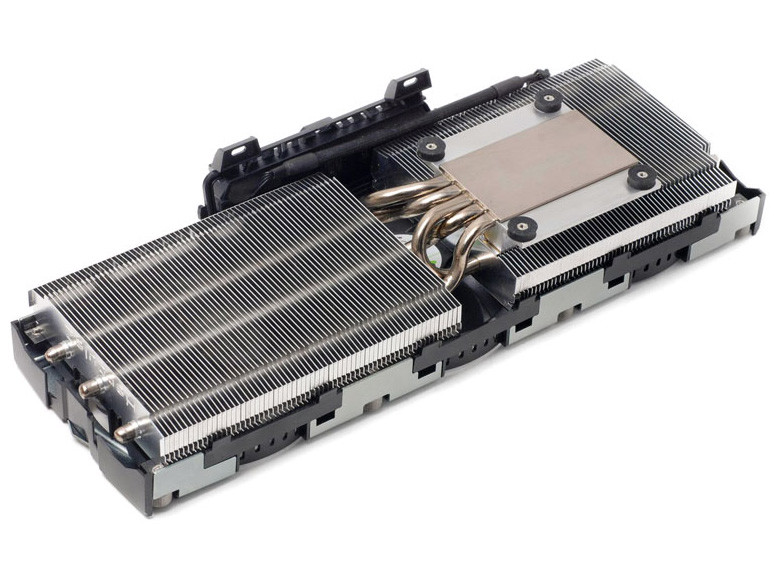 |
||
| high / 1080p | 70−75 | 60−65 |
| ultra / 1080p | 65−70 | 55−60 |
| QHD / 1440p | 45−50 | 40−45 |
| 4K / 2160p | 24−27 | 21−24 |
| low / 720p | 120−130 | 110−120 |
| medium / 1080p | 80−85 | 70−75 |
| The average gaming FPS of GeForce GTX 780 Ti in Battlefield 5 is 12% more, than GeForce GTX 880M SLI. | ||
| low / 768p | 50−55 | 50−55 |
| QHD / 1440p | 40−45 | 2−3 |
The average gaming FPS of GeForce GTX 780 Ti in Call of Duty: Warzone is 74% more, than GeForce GTX 880M SLI.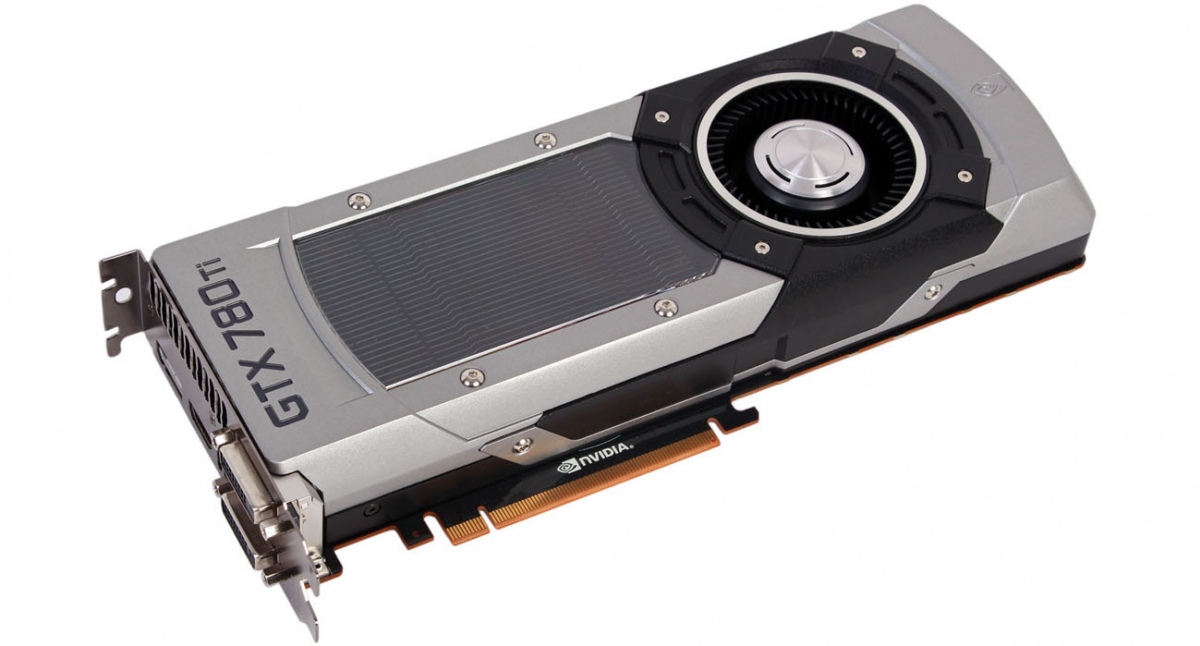 |
||
| low / 768p | 250−260 | 250−260 |
| medium / 768p | 240−250 | 220−230 |
| ultra / 1080p | 210−220 | 190−200 |
| QHD / 1440p | 150−160 | 120−130 |
| 4K / 2160p | 100−110 | 80−85 |
| high / 768p | 220−230 | 210−220 |
| The average gaming FPS of GeForce GTX 780 Ti in Counter-Strike: Global Offensive is 9% more, than GeForce GTX 880M SLI. | ||
| low / 768p | 60−65 | 60−65 |
| medium / 1080p | 55−60 | 55−60 |
GeForce GTX 780 Ti and GeForce GTX 880M SLI have the same average FPS in Cyberpunk 2077. |
||
| low / 768p | 120−130 | 120−130 |
| medium / 768p | 110−120 | 110−120 |
| ultra / 1080p | 110−120 | 100−110 |
| The average gaming FPS of GeForce GTX 780 Ti in Dota 2 is 2% more, than GeForce GTX 880M SLI. | ||
| high / 1080p | 60−65 | 50−55 |
| ultra / 1080p | 55−60 | 45−50 |
| QHD / 1440p | 35−40 | 30−35 |
| 4K / 2160p | 20−22 | 16−18 |
| low / 720p | 95−100 | 85−90 |
| medium / 1080p | 60−65 | 50−55 |
The average gaming FPS of GeForce GTX 780 Ti in Far Cry 5 is 16% more, than GeForce GTX 880M SLI.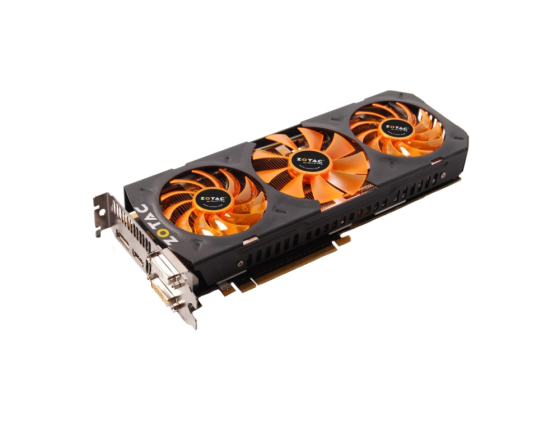 |
||
| high / 1080p | 80−85 | 65−70 |
| ultra / 1080p | 65−70 | 50−55 |
| QHD / 1440p | 40−45 | 30−35 |
| 4K / 2160p | 27−30 | 27−30 |
| low / 720p | 210−220 | 190−200 |
| medium / 1080p | 140−150 | 120−130 |
| The average gaming FPS of GeForce GTX 780 Ti in Fortnite is 15% more, than GeForce GTX 880M SLI. | ||
| high / 1080p | 75−80 | 65−70 |
| ultra / 1080p | 60−65 | 50−55 |
| QHD / 1440p | 45−50 | 35−40 |
| 4K / 2160p | 30−35 | 27−30 |
| low / 720p | 120−130 | 110−120 |
| medium / 1080p | 85−90 | 70−75 |
The average gaming FPS of GeForce GTX 780 Ti in Forza Horizon 4 is 16% more, than GeForce GTX 880M SLI.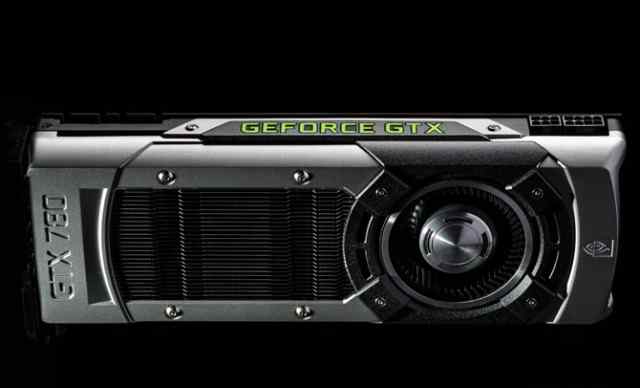 |
||
| low / 768p | 150−160 | 140−150 |
| medium / 768p | 140−150 | 130−140 |
| high / 1080p | 90−95 | 75−80 |
| ultra / 1080p | 40−45 | 35−40 |
| QHD / 1440p | 30−35 | 27−30 |
| The average gaming FPS of GeForce GTX 780 Ti in Grand Theft Auto V is 10% more, than GeForce GTX 880M SLI. | ||
| high / 1080p | 35−40 | 27−30 |
| ultra / 1080p | 27−30 | 21−24 |
| QHD / 1440p | 21−24 | 18−20 |
| 4K / 2160p | 12−14 | 10−11 |
| low / 720p | 85−90 | 75−80 |
| medium / 1080p | 45−50 | 35−40 |
The average gaming FPS of GeForce GTX 780 Ti in Metro Exodus is 21% more, than GeForce GTX 880M SLI. |
||
| low / 768p | 130−140 | 130−140 |
| medium / 1080p | 130−140 | 120−130 |
| The average gaming FPS of GeForce GTX 780 Ti in Minecraft is 3% more, than GeForce GTX 880M SLI. | ||
| ultra / 1080p | 14−16 | 14−16 |
| low / 720p | 120−130 | 110−120 |
| medium / 1080p | 18−20 | 18−20 |
| The average gaming FPS of GeForce GTX 780 Ti in PLAYERUNKNOWN’S BATTLEGROUNDS is 8% more, than GeForce GTX 880M SLI. | ||
| high / 1080p | 30−35 | 27−30 |
| ultra / 1080p | 21−24 | 18−20 |
| QHD / 1440p | 16−18 | 12−14 |
| 4K / 2160p | 10−12 | 9−10 |
| low / 720p | 85−90 | 75−80 |
| medium / 1080p | 50−55 | 40−45 |
The average gaming FPS of GeForce GTX 780 Ti in Red Dead Redemption 2 is 19% more, than GeForce GTX 880M SLI.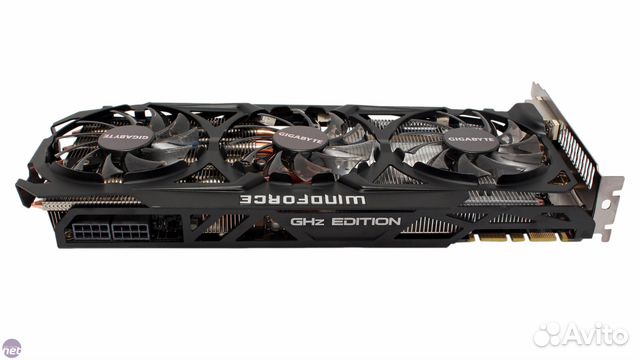 |
||
| low / 768p | 170−180 | 140−150 |
| medium / 768p | 110−120 | 95−100 |
| high / 1080p | 65−70 | 50−55 |
| ultra / 1080p | 35−40 | 30−33 |
| 4K / 2160p | 21−24 | 18−20 |
| The average gaming FPS of GeForce GTX 780 Ti in The Witcher 3: Wild Hunt is 20% more, than GeForce GTX 880M SLI. | ||
| low / 768p | 90−95 | 90−95 |
| medium / 768p | 60−65 | 60−65 |
| ultra / 1080p | − | 55−60 |
GeForce GTX 780 Ti and GeForce GTX 880M SLI have the same average FPS in World of Tanks. |
||
Full Specs
| GeForce GTX 780 Ti | GeForce GTX 880M SLI | |
| Architecture | Kepler | Kepler |
| Code name | GK110 | N15E-GX-A2 |
| Type | Desktop | Laptop |
| Release date | 7 November 2013 | 12 March 2014 |
| Pipelines | 2880 | 3072 |
| Core clock speed | 875 MHz | 954 MHz |
| Boost Clock | 928 MHz | |
| Transistor count | 7,080 million | 2x 3540 Million |
| Manufacturing process technology | 28 nm | 28 nm |
| Texture fill rate | 210 billion/sec | |
| Floating-point performance | 5,345 gflops | |
| Length | 10. 5″ (26.7 cm) 5″ (26.7 cm) |
|
| Memory bus width | 384 Bit | 2x 256 Bit |
| Memory clock speed | 7.0 GB/s | 5000 MHz |
| Memory bandwidth | 336 GB/s | |
| Shared memory | — | — |
| DirectX | 12 (11_1) | DirectX 12 (FL 11_0), Shader 5.0 |
| Shader Model | 5.1 | |
| OpenGL | 4.4 | |
| OpenCL | 1.2 | |
| Vulkan | 1.1.126 | |
| CUDA | + | + |
| CUDA cores | 2880 | |
| Bus support | PCI Express 3.0 | |
| Height | 4.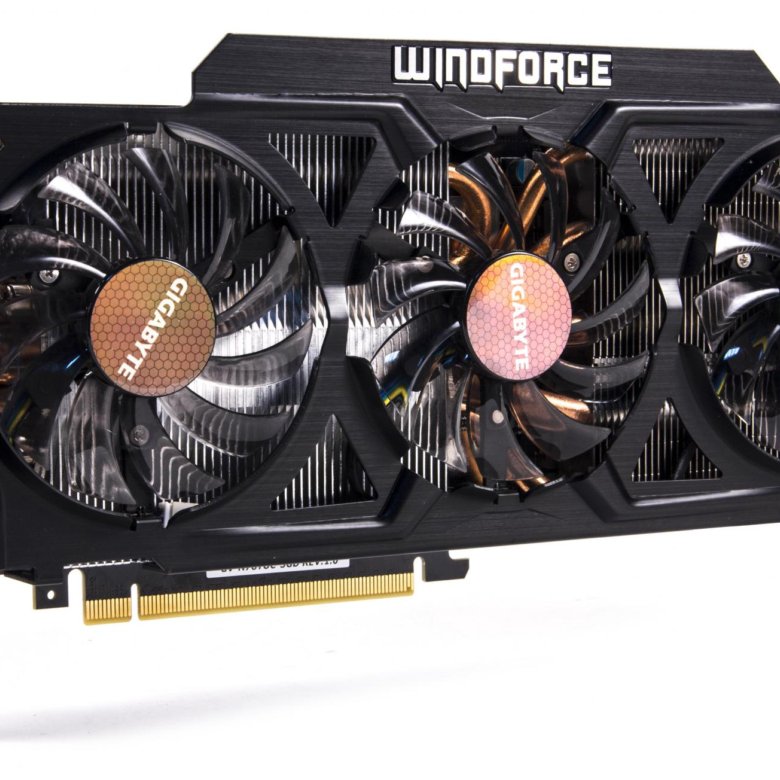 376″ (11.1 cm) 376″ (11.1 cm) |
|
| SLI options | + | + |
| Multi monitor support | 4 displays | |
| HDMI | + | |
| HDCP | + | |
| Maximum VGA resolution | 2048×1536 | |
| Audio input for HDMI | Internal | |
| 3D Gaming | + | |
| 3D Vision | + | |
| 3D Vision Live | + | |
| Bitcoin / BTC (SHA256) | 322 Mh/s | |
| Laptop size | large | |
| Optimus | + | |
| Blu Ray 3D | + | |
|
Check Price |
Check Price |
Similar compares
- GeForce GTX 780 Ti vs Radeon RX 470 mobile
- GeForce GTX 780 Ti vs Quadro M5000
- GeForce GTX 880M SLI vs Radeon RX 470 mobile
- GeForce GTX 880M SLI vs Quadro M5000
- GeForce GTX 780 Ti vs Radeon RX 580
- GeForce GTX 780 Ti vs Radeon RX 580 mobile
- GeForce GTX 880M SLI vs Radeon RX 580
- GeForce GTX 880M SLI vs Radeon RX 580 mobile
Power, Temperature, & Noise — The NVIDIA GeForce GTX 780 Ti Review
by Ryan Smithon November 7, 2013 9:01 AM EST
- Posted in
- GPUs
- GeForce
- Kepler
- NVIDIA
302 Comments
|
302 Comments
The NVIDIA GeForce GTX 780 Ti ReviewMeet The GeForce GTX 780 TiHands On With NVIDIA’s Shadowplay & The TestMetro: Last LightCompany of Heroes 2Bioshock InfiniteBattlefield 3Crysis 3Crysis: WarheadTotal War: Rome 2Hitman: AbsolutionGRID 2SyntheticsComputePower, Temperature, & NoiseOverclockingFinal Words
As always, last but not least is our look at power, temperature, and noise. Next to price and performance of course, these are some of the most important aspects of a GPU, due in large part to the impact of noise. All things considered, a loud card is undesirable unless there’s a sufficiently good reason – or sufficiently good performance – to ignore the noise.
Next to price and performance of course, these are some of the most important aspects of a GPU, due in large part to the impact of noise. All things considered, a loud card is undesirable unless there’s a sufficiently good reason – or sufficiently good performance – to ignore the noise.
| GeForce GTX 780 Series Voltages | ||||
| GTX 780 Ti Boost Voltage | GTX 780 Boost Voltage | GTX 780 Ti Base Voltage | ||
| 1.187v | 1.1625v | 1.012v | ||
Taking a quick look at voltages, we find that our GTX 780 Ti operates at a slightly higher voltage at its maximum boost bin than the original GTX 780 did.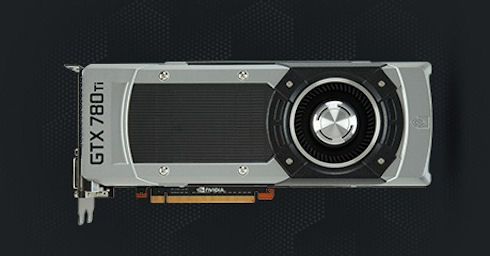 The difference is minor, but the additional voltage may be necessary to hit the slightly higher clockspeeds GTX 780 Ti operates at relative to GTX Titan and GTX 780.
The difference is minor, but the additional voltage may be necessary to hit the slightly higher clockspeeds GTX 780 Ti operates at relative to GTX Titan and GTX 780.
| GeForce GTX 780 Ti Average Clockspeeds | |||
| Max Boost Clock | 1020MHz | ||
| Metro: LL |
1000MHz |
||
| Coh3 |
997MHz |
||
| Bioshock |
954MHz |
||
| Battlefield 3 |
980MHz |
||
| Crysis 3 |
980MHz |
||
| Crysis: Warhead |
1000MHz |
||
| TW: Rome 2 |
950MHz |
||
| Hitman |
993MHz |
||
| GRID 2 |
967MHz |
||
| Furmark |
823MHz |
||
Moving on to clockspeeds, we find that the GTX 780 Ti does very well when it comes to boosting. With a maximum boost clock of 1020MHz, we have 2 benchmarks averaging 1000MHz, and another 4 averaging 980MHz or better.
With a maximum boost clock of 1020MHz, we have 2 benchmarks averaging 1000MHz, and another 4 averaging 980MHz or better.
With all of our GK110 cards sharing a common design, at idle there’s very little to differentiate them. Other than GTX Titan’s extra 3GB of VRAM, we’re essentially looking at identical cards when idling.
Moving on to load power, we can see the power/heat ramifications of the slight clockspeed increase coupled with the activation of the 15th SMX. Even with the further optimizations NVIDIA has put into the new revision of GK110, power consumption has gone up in accordance with the higher performance of the card, just as we’d expect. Since NVIDIA doesn’t notably alter their power efficiency here, that increased performance has to come at the cost of increased power consumption. Though in this benchmark it’s worth pointing out that we’re measuring from the wall and that GTX 780 Ti outperforms GTX Titan by 8%, so some of that 29W power difference will come from the higher CPU load caused by the increased framerates.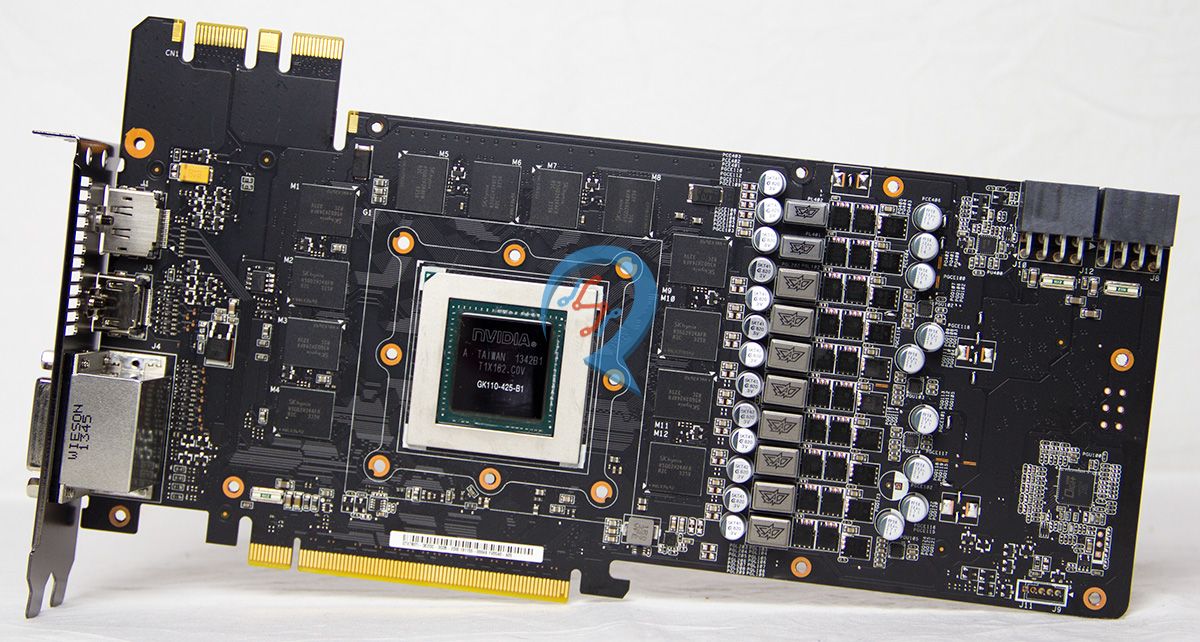
As for the GTX 780 Ti SLI, here we see power level off at 556W, 20W more than the GTX 780 SLI. Some (if not most) of that is going to be explained by the increased CPU power consumption from the GTX 780 Ti SLI’s higher framerates. Coupled with that is the fact that in SLI setups these cards get hotter, and hence have to downclock a bit more to maintain equilibrium, which helps to offset the increased power requirements of GTX 780 Ti and keep the SLI results so close to the GTX 780 SLI results.
Switching over to FurMark, we find that power consumption is also up, but only slightly. With GPU Boost 2.0 clamping down on power consumption all of our GK110 cards should be clamped at 250W here, and with a difference between GTX 780 and GTX 780 Ti of under 10W, that’s exactly what appears to be happening here.
On a side note, it’s interesting to note here that under FurMark we’re seeing the GTX 780 Ti draw more power than the Radeon R9 290X. Despite the fact that the 290X has a higher rated TDP, in the card’s default quiet mode the card can’t actually dissipate as much heat (and thereby consume as much power) as the GTX 780 Ti can.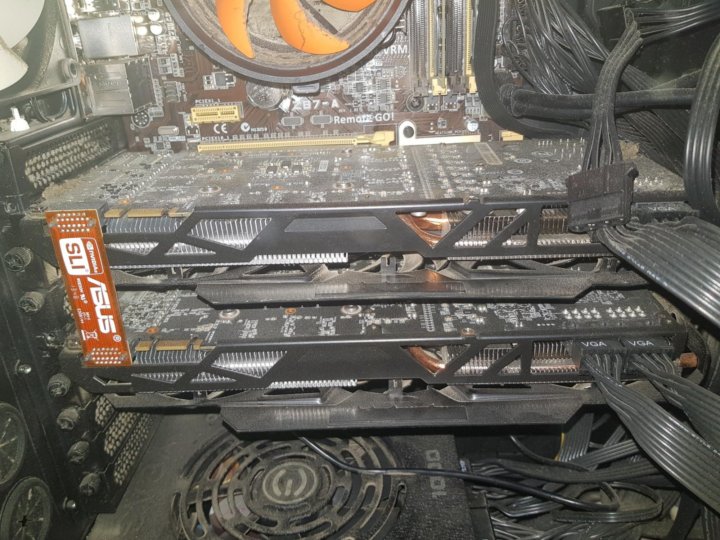
For idle temperatures we’re once again looking at cards that are for all intents and purposes identical. At 30C the GTX 780 Ti easily stays nice and cool.
As we mentioned in our look at the GTX 780 Ti hardware, NVIDIA has increased their default temperature throttle point from 80C on the GTX Titan/780 to 83C on the GTX 780 Ti. The end result is that in all of our temperature limited tests the GTX 780 Ti will peak at 83C-84C, whereas the older GK110 cards will peak at 80C-81C.
FurMark reiterates what we saw with Crysis 3. The temps are up a bit across the board, while the GK110 cards are holding near their throttle points. The SLI setups meanwhile approach the upper-80s at 88C, reflecting the fact that even with blowers, there’s some impact on neighboring cards in high load situations.
Our last idle scenario, we once again see all of our GK110 cards performing similarly, with idle noise levels in the 38dB-39dB range.
Moving on to our gaming load noise results, we can see the full repercussions of the GTX 780 Ti’s higher average power consumption coupled with the card’s higher temperature throttle point. Moving the throttle point along the same curve has the end result of moving higher the equilibrium point and thereby the card’s operating noise levels. As the fastest single-GPU card on this card, the GTX 780 Ti is still doing very well for itself and for a blower based design at 51.7dB, though at 1.5dB louder than GTX Titan and 4.2dB louder than GTX 780 the noise tradeoff for the card’s higher performance is very clear. Meanwhile the fact that it’s tied with the GTX 780 SLI comes with its own bit of irony.
Speaking of the GTX 780 SLI, we can see the noise impact of SLI configurations too. The GTX 780 Ti SLI levels out at 53.7dB, 2dB louder than our single-card configuration and 2dB louder than the GTX 780 SLI. At this point it’s just a bit louder than the 290X and quieter than a number of other 290 series setups.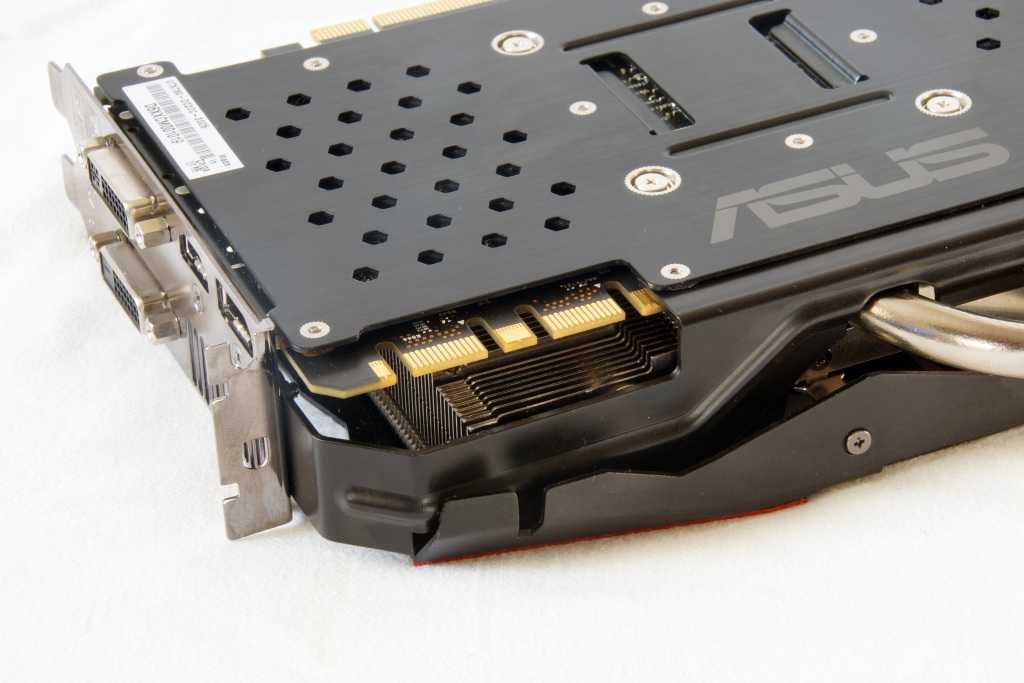
Finally with load noise levels under FurMark we can see where our various cards will peak at for noise levels. The GTX 780 Ti creeps up to 52.3dB, essentially tying with the GTX 780 and GTX Titan. Otherwise it comes in just behind the 290X, and the start of the pack for our multi-GPU setups.
As for the GTX 780 Ti SLI, like our single-card comparison points its up slightly as compared to the GTX 780 SLI.
Overall, our look at power, temperatures, and noise has been a rather straightforward validation of our earlier suspicions. GTX 780 Ti’s higher performance leads to higher power consumption, and will all other factors being held equal – including the cooler – power, temps, and noise levels all rise a bit as compared to GTX Titan and GTX 780. There’s no such thing as a free lunch here, and while GPU Boost 2.0 will keep the maximum levels suitably in check, on average GTX 780 Ti is going to be a bit worse than the other GK110 cards due to those factors. Though even with the increased noise levels in particular, GTX 780 Ti is still able to outperform 290X on noise while also delivering better gaming performance, which makes this another tidy victory for NVIDIA.
Though even with the increased noise levels in particular, GTX 780 Ti is still able to outperform 290X on noise while also delivering better gaming performance, which makes this another tidy victory for NVIDIA.
Compute
Overclocking
The NVIDIA GeForce GTX 780 Ti ReviewMeet The GeForce GTX 780 TiHands On With NVIDIA’s Shadowplay & The TestMetro: Last LightCompany of Heroes 2Bioshock InfiniteBattlefield 3Crysis 3Crysis: WarheadTotal War: Rome 2Hitman: AbsolutionGRID 2SyntheticsComputePower, Temperature, & NoiseOverclockingFinal Words
Tweet
PRINT THIS ARTICLE
NVIDIA GTX 780 Ti in 2019: Benchmarks vs. RTX 2060, 2080, Vega, & More | GamersNexus
We recently revisited the AMD R9 290X from October of 2013, and now it’s time to look back at the GTX 780 Ti from November of 2013. The 780 Ti shipped for $700 MSRP and landed as NVIDIA’s flagship against AMD’s freshly-launched flagship.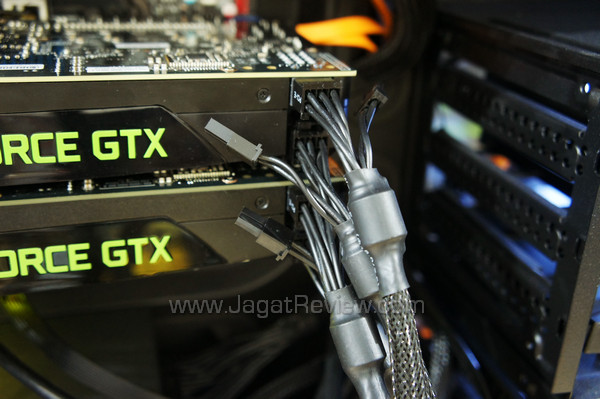 It was a different era: Memory capacity was limited to 3GB on the 780 Ti, memory frequency was a blazing 7Gbps, and core clock was 875MHz stock or 928MHz boost, using the old Boost 2.0 algorithm that kept a fixed clock in gaming. Overclocking was also more extensible, giving us a bigger upward punch than modern NVIDIA overclocking might permit. Our overclocks on the 780 Ti reference (with fan set to 93%) allowed it to exceed expected performance of the average partner model board, so we have a fairly full range of performance on the 780 Ti.
It was a different era: Memory capacity was limited to 3GB on the 780 Ti, memory frequency was a blazing 7Gbps, and core clock was 875MHz stock or 928MHz boost, using the old Boost 2.0 algorithm that kept a fixed clock in gaming. Overclocking was also more extensible, giving us a bigger upward punch than modern NVIDIA overclocking might permit. Our overclocks on the 780 Ti reference (with fan set to 93%) allowed it to exceed expected performance of the average partner model board, so we have a fairly full range of performance on the 780 Ti.
NVIDIA’s architecture has undergone significant changes since Kepler and the 780 Ti, one of which has been a change in CUDA core efficiency. When NVIDIA moved from Kepler to Maxwell, there was nearly a 40% efficiency gain when CUDA cores are processing input. A 1:1 Maxwell versus Kepler comparison, were such a thing possible, would position Maxwell as superior in efficiency and performance-per-watt, if not just outright performance. It is no surprise then that the 780 Ti’s 2880 CUDA cores, although high even by today’s standards (an RTX 2060 has 1920, but outperforms the 780 Ti), will underperform when compared to modern architectures. This is amplified by significant memory changes, capacity being the most notable, where the GTX 780 Ti’s standard configuration was limited to 3GB and ~7Gbps GDDR5.
This is amplified by significant memory changes, capacity being the most notable, where the GTX 780 Ti’s standard configuration was limited to 3GB and ~7Gbps GDDR5.
Test Methodology
Testing methodology has completely changed from our last GPU reviews, which were probably for the GTX 1070 Ti series cards. Most notably, we have overhauled the host test bench and had updated with new games. Our games selection is a careful one: Time is finite, and having analyzed our previous testing methodologies, we identified shortcomings where we were ultimately wasting time by testing too many games that didn’t provide meaningfully different data from our other tested titles. In order to better optimize our time available and test “smarter” (rather than “more,” which was one of our previous goals), we have selected games based upon the following criteria:
- Game Engine: Most games run on the same group of popular engines. By choosing one game from each major engine (e.g.
 Unreal Engine), we can ensure that we are representing a wide sweep of games that just use the built-in engine-level optimizations
Unreal Engine), we can ensure that we are representing a wide sweep of games that just use the built-in engine-level optimizations - API: We have chosen a select group of DirectX 11 and DirectX 12 API integrations, as these are the most prevalent at this time. We will include more Vulkan API testing as more games ship with Vulkan
- Popularity: Is it something people actually play?
- Longevity: Regardless of popularity, how long can we reasonably expect that a game will go without updates? Updating games can hurt comparative data from past tests, which impacts our ability to cross-compare new data and old, as old data may no longer be comparable post-patch
Game graphics settings are defined in their respective charts.
We are also testing most games at all three popular resolutions – at least, we are for the high-end. This includes 4K, 1440p, and 1080p, which allows us to determine GPU scalability across multiple monitor types. More importantly, this allows us to start pinpointing the reason for performance uplift, rather than just saying there is performance uplift. If we know that performance boosts harder at 4K than 1080p, we might be able to call this indicative of a ROPs advantage, for instance. Understanding why performance behaves the way it does is critical for future expansion of our own knowledge, and thus prepares our content for smarter analysis in the future.
If we know that performance boosts harder at 4K than 1080p, we might be able to call this indicative of a ROPs advantage, for instance. Understanding why performance behaves the way it does is critical for future expansion of our own knowledge, and thus prepares our content for smarter analysis in the future.
For the test bench proper, we are now using the following components:
GPU Test Bench (Sponsored by Corsair)
|
Component
|
Courtesy of
|
|
|
CPU
|
Intel i7-8086K 5.0GHz
|
GamersNexus
|
|
GPU
|
This is what we’re testing!
|
Often the company that makes the card, but sometimes us (see article)
|
|
Motherboard
|
ASUS ROG Maximus X Hero
|
ASUS
|
|
RAM
|
Corsair Vengeance LPX 32GB 3200MHz
|
Corsair
|
|
PSU
|
Corsair AX1600i
|
Corsair
|
|
Cooler
|
NZXT Kraken X62
|
NZXT
|
|
SSD
|
Plextor 256-M7VC
|
GamersNexus
|
GTX 780 Ti Benchmark in 2019: GTA V
Rather than our usual starting point of Sniper Elite 4 or Apex Legends, we’ll instead start with GTA V. This is a 2015 launch, so it’s closer to the 780 Ti’s 2013 launch than our other test titles. At 1080p and with Very High and Ultra settings with 2xMSAA, the 780 Ti still pulls its weight at 68FPS AVG, with lows surprisingly well-spaced at 50FPS and 41FPS 1% and 0.1%. The 780 Ti therefore ends up just behind the 290X, with both of these being reference cards with stock settings. The modern GTX 1060 6GB Gaming X runs at 83FPS AVG, outpacing the former flagship 780 Ti by an impressive 22%. The 980 Ti – remember, there was no 800 series – ended up 47% ahead of the 780 Ti and was its direct successor. Generationally, the 1080 Ti also ends up about 126% ahead, or over 2x higher in performance. It’s sort of silly to use percentages, at this point, so the take-away is that 153FPS AVG on the 1080 Ti allows graduation to significantly higher graphics settings and resolutions.
This is a 2015 launch, so it’s closer to the 780 Ti’s 2013 launch than our other test titles. At 1080p and with Very High and Ultra settings with 2xMSAA, the 780 Ti still pulls its weight at 68FPS AVG, with lows surprisingly well-spaced at 50FPS and 41FPS 1% and 0.1%. The 780 Ti therefore ends up just behind the 290X, with both of these being reference cards with stock settings. The modern GTX 1060 6GB Gaming X runs at 83FPS AVG, outpacing the former flagship 780 Ti by an impressive 22%. The 980 Ti – remember, there was no 800 series – ended up 47% ahead of the 780 Ti and was its direct successor. Generationally, the 1080 Ti also ends up about 126% ahead, or over 2x higher in performance. It’s sort of silly to use percentages, at this point, so the take-away is that 153FPS AVG on the 1080 Ti allows graduation to significantly higher graphics settings and resolutions.
Overclocking is completely insane on the 780 Ti. It’s fun, honestly, and that makes us miss the older NVIDIA designs that were less locked-down. With a 220MHz core offset and 400MHz memory offset, we ended up at 83FPS AVG, which is a massive 22% improvement over the stock 68FPS AVG performance. This would be higher than the factory overclocked partner model 780 Tis, so you get a full representation of the range. Overclocking gives us more direct voltage control and clock control than modern generations, resulting in performance that matches the GTX 1060 6GB nearly identically. The R9 290X overclocked to about 73FPS AVG, allowing the 780 Ti to take a lead once pushed. Of course, a partner model 290X would theoretically be able to push a bit further, but then so would a partner 780 Ti.
With a 220MHz core offset and 400MHz memory offset, we ended up at 83FPS AVG, which is a massive 22% improvement over the stock 68FPS AVG performance. This would be higher than the factory overclocked partner model 780 Tis, so you get a full representation of the range. Overclocking gives us more direct voltage control and clock control than modern generations, resulting in performance that matches the GTX 1060 6GB nearly identically. The R9 290X overclocked to about 73FPS AVG, allowing the 780 Ti to take a lead once pushed. Of course, a partner model 290X would theoretically be able to push a bit further, but then so would a partner 780 Ti.
For frametime consistency comparisons, the R9 290X ends up around 14-16ms frame-to-frame interval on average, with minimal deviation from one frame to the next. Frametimes need to be consistent and should ideally not exhibit variance greater than 8ms to 12ms from one frame to the next. The 290X succeeds here and is acceptable in frametime consistency.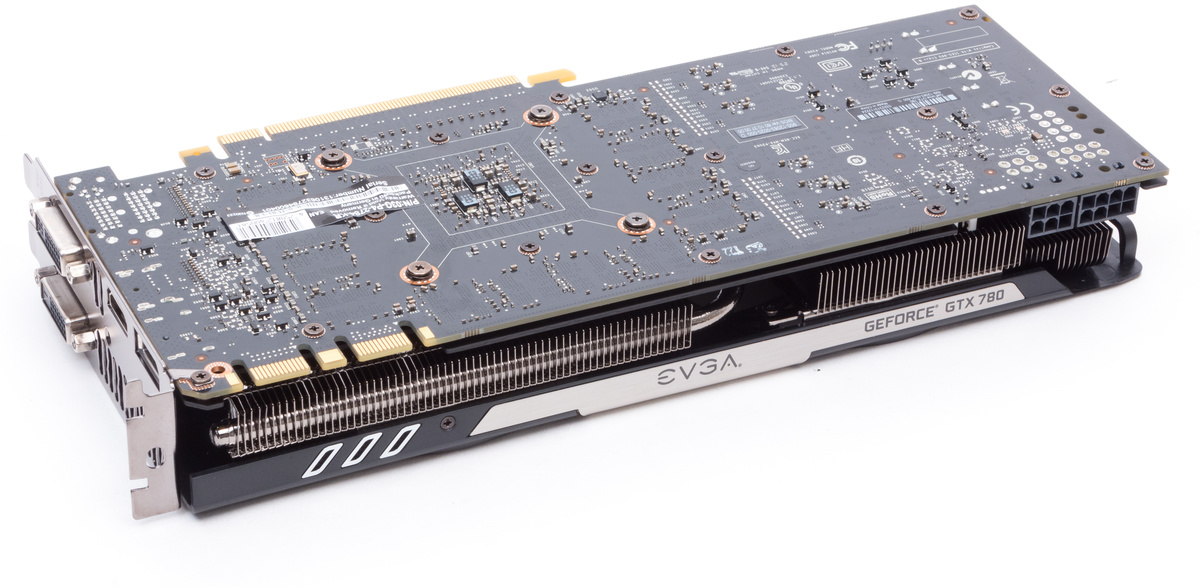
The GTX 780 Ti also does well, ending up functionally tied with the 290X. It almost completely obscures the 290X line, overall, and has mostly equal performance for the actual player. There is one spike up to 33ms and then a corrective spike down, but beyond this instance, the rest is about the same between the two cards.
At 1440p, the 780 Ti falls to 49FPS AVG, a decline of 27% from its 1080p results. This also puts it as about on-par with an R9 290X 4GB card or RX 580 card. For reference, the 980 Ti maintains a rough 47% lead here, so the relative scaling is about the same as at 1080p. A used GTX 1070 might be an affordable upgrade, although even a modern RTX 2060 at $350 offers a 63% performance uplift under these settings. Overclocked, the GTX 780 Tiends up at a firm 60FPS AVG, giving us a reasonable framerate for actual gameplay, despite lows struggling a bit. The overclocked FPS puts it at 1060 OC levels, with the 290X OC stuck closer to 51FPS AVG.
4K wasn’t even remotely common in 2013.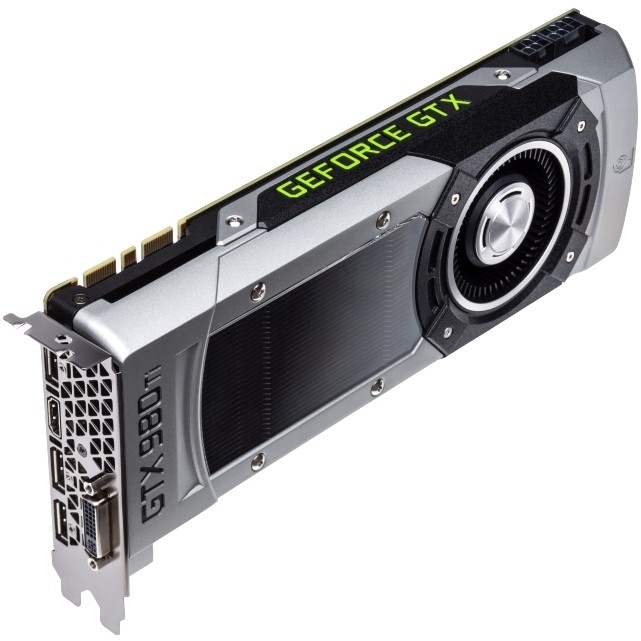 This was far from the reaches of gaming GPUs at the time, as illustrated with the 780 Ti’s 25FPS AVG at 4K. This is the sort of test that people would likely have scoffed at as synthetic, but today, even though the former flagship 780 Ti and R9 290X are roughly tied in their inability to play, it still takes a modern $500 card to reasonably begin playing with these settings. The RTX 2070 at $500 could absolutely be made to work with settings reductions, although that may be undesirable. Overclocking the 780 Ti gets it to 30FPS, which is clearly still not enough, particularly when considering frametime performance is sporadic and places us at 13FPS 0.1% lows, translating to frametime spikes upwards of 90ms. That means that, sometimes, you don’t get a new frame for a full 10th of a second.
This was far from the reaches of gaming GPUs at the time, as illustrated with the 780 Ti’s 25FPS AVG at 4K. This is the sort of test that people would likely have scoffed at as synthetic, but today, even though the former flagship 780 Ti and R9 290X are roughly tied in their inability to play, it still takes a modern $500 card to reasonably begin playing with these settings. The RTX 2070 at $500 could absolutely be made to work with settings reductions, although that may be undesirable. Overclocking the 780 Ti gets it to 30FPS, which is clearly still not enough, particularly when considering frametime performance is sporadic and places us at 13FPS 0.1% lows, translating to frametime spikes upwards of 90ms. That means that, sometimes, you don’t get a new frame for a full 10th of a second.
Apex Legends GTX 780 Ti 2019 Benchmark vs. 1080 Ti, RTX 2080, R9 290X
Apex Legends is up next. We don’t have as many cards tested here since we only just recently added it, but the test gives a look at one of the most popular, modern games that has come across our bench. Apex Legends uses the Source 2 engine and DirectX 11, building on top of the platform that Titanfall 2 laid-out for it. This one omits the 290X because it was previously tested, but we’ll show plenty of 290X numbers following Apex Legends.
Apex Legends uses the Source 2 engine and DirectX 11, building on top of the platform that Titanfall 2 laid-out for it. This one omits the 290X because it was previously tested, but we’ll show plenty of 290X numbers following Apex Legends.
At 1080p, the GTX 780 Ti stock card runs high settings with a 46FPS AVG, allowing the GTX 970 SC a lead of 40% over the 780 Ti. Overclocking the 780 Ti does allow it to gain an impressive 21% performance over its baseline stock performance, although this still isn’t enough to top the 970. If you’re looking to jump to another flagship, the 980 Ti Hybrid operates at 80FPS AVG stock, which is about a 75% increase over the stock 780 Ti. The 1080 Ti is a couple times higher in performance and is capable of 4K, whereas the 780 Ti would struggle even with 1440p in this title.
GTX 780 Ti in 2019: F1 2018
F1 2018 uses the EGO engine and offers a good look at other racing games made by CodeMasters, as they all run on roughly the same engine.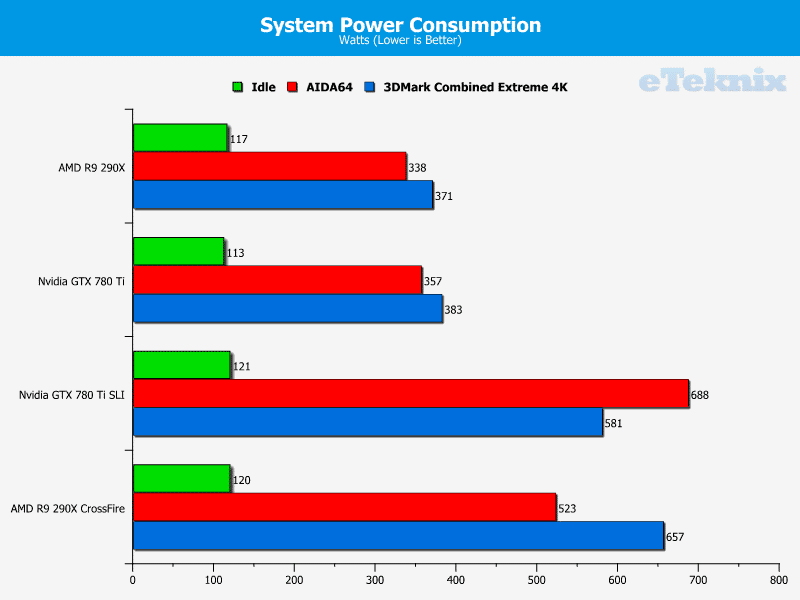 F1 2018 also has some interesting quirks, like its desire for higher performance system memory, although that’s irrelevant where we control for non-GPU variables.
F1 2018 also has some interesting quirks, like its desire for higher performance system memory, although that’s irrelevant where we control for non-GPU variables.
At 1080p, the 780 Ti ends up at 59FPS with Ultra-High settings. That’s pretty good for a card this old and considering that quality can be dropped to maintain higher FPS. Frametimes are rough in this game in general, although not for Vega, but average FPS plants the 780 Ti as below the 290X’s 65FPS AVG. The 290X also maintains better frametime consistency in this test path. Overclocking the 780 Ti propels it to nearing 70FPS AVG, approaching the GTX 970’s performance. That’s not particularly compelling performance when considering the tremendous step-down that the 970 is from a flagship. Overclocking the 290X lands it at about 390X levels, unsurprisingly.
At 1440p, the 780 Ti runs about 46FPS AVG stock and 54FPS AVG overclocked, which ranks it as comparable to a 390X or 290X stock card when the 780 Ti has its OC applied.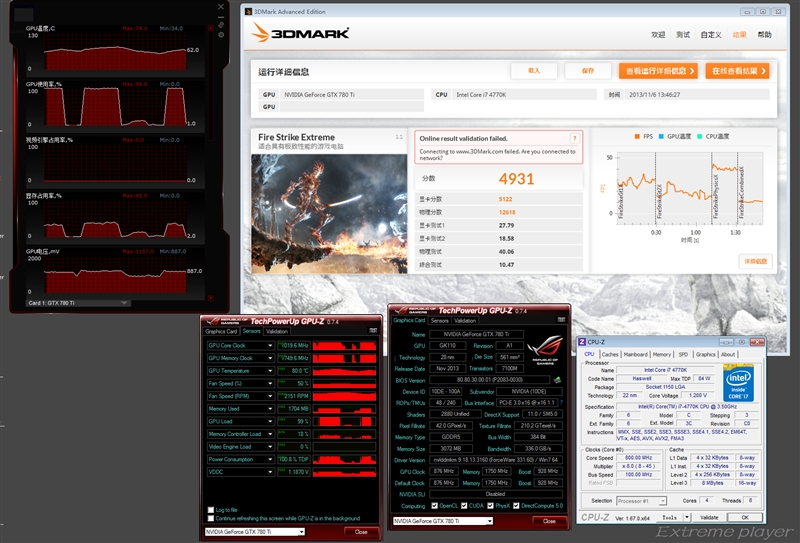 The 980 Ti holds a tremendous lead of 76% over the stock 780 Ti, indicating that we may be running into some memory limitations on the 780 Ti’s limited 3GB framebuffer.
The 980 Ti holds a tremendous lead of 76% over the stock 780 Ti, indicating that we may be running into some memory limitations on the 780 Ti’s limited 3GB framebuffer.
4K has the 780 Ti at 28FPS AVG, with an overclock barely improving framerate. Frametime performance is dismal here, making this game unplayable with these settings. The 290X also struggles, although not to the extent of the 780 Ti. AMD tends to do better in this title versus its mean performance in other titles.
Far Cry 5 – GTX 780 Ti Benchmark 2019
Far Cry 5 positions the 780 Ti at 49FPS AVG with our graphics settings, ranking it as between a 290X’s 58FPS AVG and 960 SSC’s 44FPS AVG. Even the RX 570 outperforms the 780 Ti, running at 59FPS AVG and with consistent frametime performance. The 980 Ti outperforms the 780 Ti stock card by 78%, jumping to 88FPS AVG from 49FPS AVG. Overclocking the 780 Ti puts it between the 390X and 290X stock cards.
At 1440p, performance falls to 35FPS AVG, allowing the 290X a lead of 22% stock.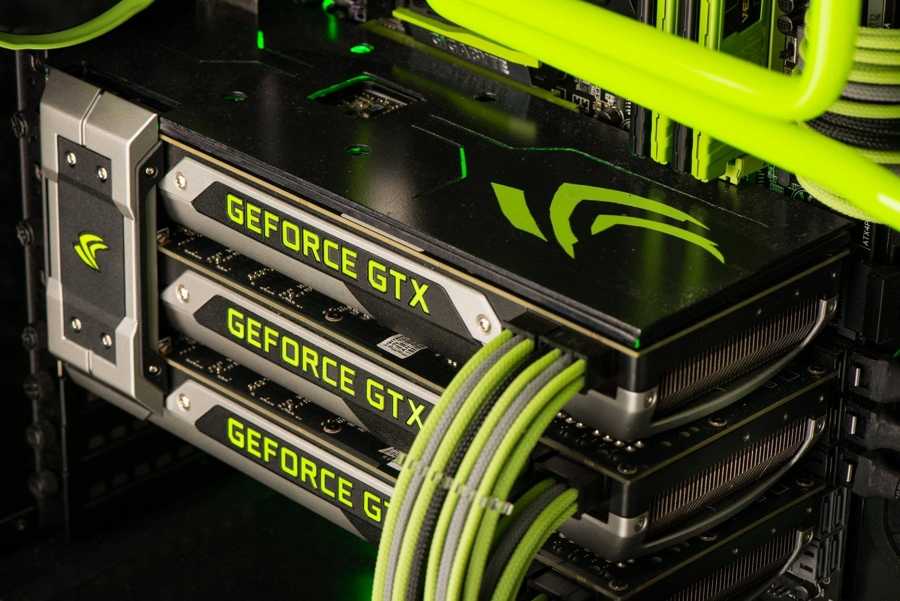 That said, overclocking the 780 Ti ties it up to the 290X stock and gets it close to overclocked 290X performance, although the 290X maintains a lead. The 980 Ti can play this game reasonably well at 1440p, whereas the 780 Ti struggles without a graphics quality reduction.
That said, overclocking the 780 Ti ties it up to the 290X stock and gets it close to overclocked 290X performance, although the 290X maintains a lead. The 980 Ti can play this game reasonably well at 1440p, whereas the 780 Ti struggles without a graphics quality reduction.
4K performance has the 780 Ti at 18FPS AVG, marking it as clearly unfit for 4K. That’s really no surprise given the 4K market in 2013. Other old cards also struggle here, and even the 1080 Ti ends up below 60FPS AVG, although it’s close enough to make things work with a settings change.
Sniper 4 – GTX 780 Ti DirectX 12 Benchmark
Sniper Elite 4 will only be tested at 1080p for this one. We normally also do 4K tests for some synthetics, but will stick to 1080p on the 780 Ti for today’s Sniper Elite benchmark. Stock settings run the game at 73FPS AVG, which ranks it as between the 960 and RX 570. The 290X runs 98FPS AVG stock, and we should note that this game is more compute intensive, so that may be the specific reason we see the advantage on the 290X. With the 780 Ti overclock, we end up at 88FPS AVG to close-in on the RX 570, but see that the 290X still holds a lead of 11% over the 780 Ti OC benchmark. The 290X climbs further with its own overclock, approaching levels of the RX 580 8GB.
With the 780 Ti overclock, we end up at 88FPS AVG to close-in on the RX 570, but see that the 290X still holds a lead of 11% over the 780 Ti OC benchmark. The 290X climbs further with its own overclock, approaching levels of the RX 580 8GB.
Conclusion: GTX 780 Ti Upgrade Options
If you’re upgrading for the same price today as you paid 6 years ago for the 780 Ti, the RTX 2080 is a massive upward shift that better enables higher resolutions. These are the main reason for an upgrade, we think, as the monitor market has migrated heavily toward more affordable 4K in the time since the 780 Ti launched. An RTX 2080 will probably cost about $100 more than the average MSRP of GTX 780 Ti cards of 2013 and 2014, with used GTX 1080 Ti or used GTX 980 Ti options still offering strong value positioning (for those comfortable with used, anyway). If you’re more cost-conscious about an upgrade, the RTX 2060 still outperforms a 780 Ti and is about $350, reviewed here, and AMD’s Vega 56 is a good choice when it can be found for around $300. Performance will be a couple times higher in average framerate with an RTX 2080, making it compelling, and so the card will allow for higher resolution or higher settings quality. The 780 Ti now sits closer to a 1060 than anything else, sometimes even lower than an RX 570, and so is beginning to show its age.
Performance will be a couple times higher in average framerate with an RTX 2080, making it compelling, and so the card will allow for higher resolution or higher settings quality. The 780 Ti now sits closer to a 1060 than anything else, sometimes even lower than an RX 570, and so is beginning to show its age.
Editorial, Testing: Steve Burke
Video: Josh Svoboda, Andrew Coleman
Asus GeForce GTX 780 Ti DirectCU II OC (GTX780TI-DC2OC-3GD5) Review
Today let’s going to look at Asus high-end graphics card based on the NVIDIA GeForce GTX 780 Ti core – the Asus GeForce GTX 780 Ti DirectCU II OC 3GB. Well, this isn’t exactly Asus’ highest end graphics card, since they still got the Asus ROG Matrix GTX 780 Ti, Titan Black and others. But for their non-ROG line, this is one of the fastest single GPU that the company has to offer. Asus’ GTX 780 Ti DirectCU II OC is said to offer 6% faster game performance compared to the reference card. It features the company’s award winning DirectCU II cooling system, offering 20% cooler and 3X quieter performance.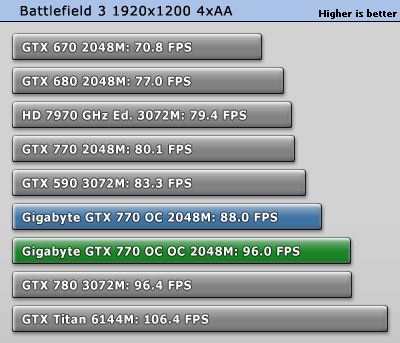 This is basically the GTX 780’s bigger brother. If you want to find out if this card can satisfy your gaming needs, please continue reading my Asus GeForce GTX 780 Ti DirectCU II OC review below.
This is basically the GTX 780’s bigger brother. If you want to find out if this card can satisfy your gaming needs, please continue reading my Asus GeForce GTX 780 Ti DirectCU II OC review below.
Asus GTX780TI-DC2OC-3GD5 Review
The GeForce GTX 780 Ti features NVIDIA’s GK110 processor with 2880 CUDA Cores, 3GB GDDR5 memory with a clock speed of 7 Gbps running on a 384-bit memory interface, and supports most of the technology that NVIDIA has to offer.
Asus’ GeForce GTX 780 Ti (GTX780TI-DC2OC-3GD5) has a higher base and boost clock speeds compared to the reference card (954/1020 MHz vs 875/928 MHz). It features the DirectCU II cooler design offering a much better and quieter cooling solution. Aside from that, Asus also used the exclusive CoolTech fan which is said to drive wider airflow and performs better compared to a typical fan we see in most graphics cards.
The Asus GTX780TI-DC2OC-3GD5 is built with a 10 phase Super Alloy power with DIGI+ VRM enabling it to deliver 15% more enhanced power efficiency, 30% lesser power noise, wider voltage modulation tolerance, improved overall stability and longevity by 2. 5 times compared to a reference GTX 780 Ti. This means that Asus’ GTX 780 Ti will not only perform better, but will also overclock better than a reference card.
5 times compared to a reference GTX 780 Ti. This means that Asus’ GTX 780 Ti will not only perform better, but will also overclock better than a reference card.
Just like most GeForce GTX graphics card, the Asus GeForce GTX 780 Ti DC2 OC supports technologies such as: NVIDIA Adaptive V-Sync, G-Sync, PhysX, GPU Boost, 3D Vision, DirectX 11.2, PCIE Express 3.0 and SLI multi-GPU configurations.
I’ll discuss more of its features as we take a closer look at the card below, after its specifications table.
Asus GTX 780TI-DC2OC-3GD5 Specifications
| Specifications | GTX780TI-DC2OC-3GD5 |
|---|---|
| Graphics Engine | NVIDIA GeForce GTX 780 Ti |
| Bus Standard | PCI Express 3.0 |
| Video Memory | GDDR5 3GB |
| Engine Clock | GPU Boost Clock : 1020 MHz GPU Base Clock : 954 MHz |
| CUDA Core | 2880 |
| Memory Clock | 7000 MHz ( GDDR5 ) |
| Memory Interface | 384-bit |
| Interface | DVI Output : Yes x 1 (DVI-I), Yes x 1 (DVI-D) HDMI Output : Yes x 1 Display Port : Yes x 1 (Regular DP) HDCP Support : Yes |
| Power Consumption | up to 375W additional 8+8 pin PCIe power required |
| Accessories | 1x Power cable 1x Red metal sticker kit 1x Gold metal sticker kit |
| Software | ASUS GPU Tweak & Driver ASUS Features DirectCU Series OC Series Super Alloy Power |
| Dimensions | 11. 3 » x 5.8 » x 1.6 » Inch 3 » x 5.8 » x 1.6 » Inch |
A Closer Look
The Asus GTX 780 Ti DirectCU II OC comes with a very familiar looking box. Asus has been using the same design for their non ROG graphics card. At the back of the box you’ll see some of the highlighted features of the graphics card.
Inside the box you’ll get a PCIE Power adapter, a Driver/Software CD, a quick installation guide, the GTX 780 Ti itself, and (surprise surprise) stickers!
Above are photos of the Asus GTX 780 Ti with its plain black metal shroud and at the back is a nice and stylish aluminum backplate supporting the PCB of the card.
Asus is giving its customers the option how they want their GTX 780 Ti to look like. You can choose from a Red sticker/decal or a Gold one. Use Red if you have a Black-Red themed motherboard, and probably the Gold one if you bought one of Asus legacy Z97 motherboards. Those are not ordinary paper stickers. They are basically aluminum cut-outs with adhesives on the other side.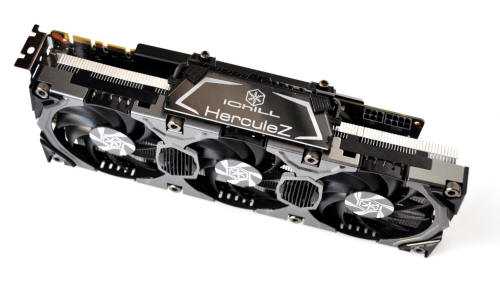
The Asus GTX780TI-DC2OC-3GD5 features a reverse power connector making it easier for you to unlock and disconnect those two 8-pin power connector. There are also LED indicators on both PCIE power connectors. At the center rear, near the power connector, are voltage points for monitoring the card’s temperature and voltage directly. It has two SLI fingers, making it possible to do up to 4-way SLI multi-GPU configuration.
For connectivity, the card has two DVI ports, a full sized DisplayPort and an HDMI port. The aluminum fins are cooled by two different fans. The first one is the CoolTech fan that, according to Asus, performs better than a regular one. Meanwhile the other fan looks like a typical fan used in most of Asus graphics card.
Here we see the front shroud of the DirectCU II cooler, and that is made of metal (but not aluminum), and not plastic like what they use in their mid-range graphics cards. The stylish backplate is all aluminum, but it doesn’t really take away the heat from the card. Instead it helps in the stability and supports the PCB of the card, preventing it from flexing unnecessarily.
Instead it helps in the stability and supports the PCB of the card, preventing it from flexing unnecessarily.
Removing the top metal shroud reveals the fairly large aluminum heatsink that is cooling the GPU, and five heatpipes that directly contacts with the GPU. The rest of the components (like the memory chips) are cooled by the two fans.
Above are photos of the front and back view of the Asus GTX 780TI-DC2OC-3GD5′ PCB. You can see at the center portion, directly behind the GPU core, are three Black POSCAPs that lowers power noise, enhances overclocking, and improves the stability of the card.
The card draws its power from two 8 pin power connector and those ports are placed in a reverse orientation where the lock is on the other side, making it easier for the user to connect and disconnect the PCIE power cable. Asus is using a DIGI+ VRM controller to manage and regulate the Super Alloy Power components in the graphics card.
Above are photos of the solid capacitors, SAP, and MOSFETs aligned right besides the memory chips.
Asus is using a total of 12 SKhynix H5GQ2h34AFR memory chips, for a total of 3GB capacity. These are highly capable and overclockable memory chips and are widely used specially in high end components. The Asus GTX 780 Ti DirectCU II OC is powered by NVIDIA’s GK110-425-B1 graphics processor.
Test Setup
In testing the Asus GeForce GTX 780 Ti DirectCU II OC, I am using a Sandy Bridge based system. Below is a list of the specification of the system.
Operating System: Windows 8.1 Pro 64bit
Motherboard: Asus P8H67-M Evo
Processor: Intel Core i5-2500K
CPU Cooler: NZXT Kraken X60
Memory: 2x 4GB G.Skill RipJaws X
Graphics card: Asus GeForce GTX 780 Ti DirectCU II OC
Hard Drive: Samsung 830 128GB for the OS and WD RE 4TB for game files
Power Supply: Corsair HX650 80 Plus Gold
Case: Cooler Master HAF XM
Case Fans Installed: 2x Cooler Master SickleFlow 120mm for intake and a Noctua NF-S12A PWM for exhaust
Aside from the components mentioned above, I used the driver version NVIDIA ForceWare 335.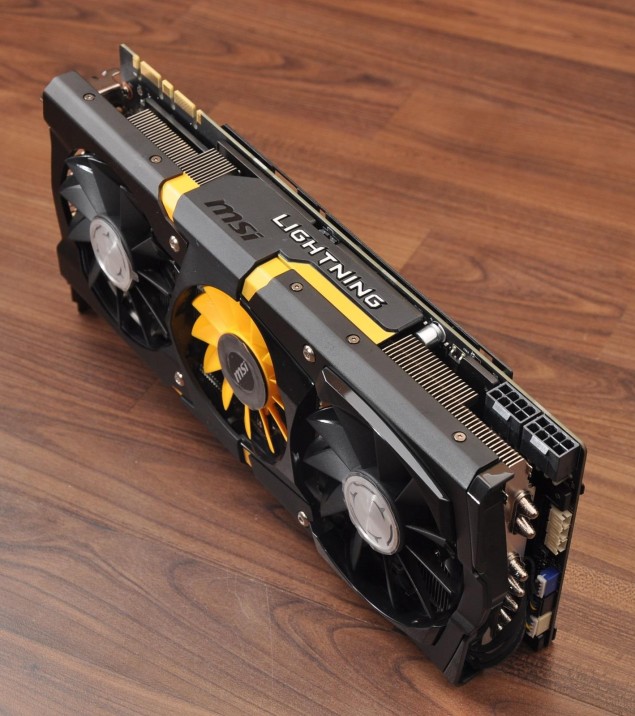 23 for Windows 8.1 64bit. I used TechPowerUp’s GPU-Z 0.7.7 to monitor the graphics card’s information, and I used Asus GPU-Tweak 2.5.2.4 to monitor its temperature and the status of the card. In monitoring the frame rates while gaming, I used FRAPS to get the minimum, maximum and average frames per seconds.
23 for Windows 8.1 64bit. I used TechPowerUp’s GPU-Z 0.7.7 to monitor the graphics card’s information, and I used Asus GPU-Tweak 2.5.2.4 to monitor its temperature and the status of the card. In monitoring the frame rates while gaming, I used FRAPS to get the minimum, maximum and average frames per seconds.
For the synthetic benchmarks, I used 3DMark Firestrike and Firestrike Extreme, Unigine Engine Heaven and Final Fantasy XIV: A Real Reborn Character Creation Benchmark tool. Whereas for the game benchmarks, I used several games, a combination of not-so-demanding games to graphics extensive games like Crysis 3.
All benchmarking tools and games are configured to their highest possible settings at 1920×1080 display resolution. I didn’t have the chance to test it at a higher resolution or in multiple display settings since I was limited with the monitor I currently have.
Overclocking the Asus GTX 780 Ti DirectCU II OC 3GB
I was able to overclock the Asus GTX 780 TI DirectCU II OC further using the Asus GPU Tweak. I was able to reach a GPU clock speed of 1125 MHz, memory clock of 1901 MHz and a boost speed of 1190 MHz. Obviously these aren’t the best clock speeds since I’m still trying to master the art of overclocking. I’m sure the card can handle better and higher clock speeds than the settings I used. Below are GPU-Z screenshots of the stock settings and the overclocked settings. Click image for a larger view.
I was able to reach a GPU clock speed of 1125 MHz, memory clock of 1901 MHz and a boost speed of 1190 MHz. Obviously these aren’t the best clock speeds since I’m still trying to master the art of overclocking. I’m sure the card can handle better and higher clock speeds than the settings I used. Below are GPU-Z screenshots of the stock settings and the overclocked settings. Click image for a larger view.
Temperature and Fan Noise
As expected from a graphics card cooled by a DirectCU II cooling system, the Asus GTX 780 Ti DC2 OC runs very quiet on idle and medium load. Even at full load it is still generally silent at 30% to 40% rotational speed. On idle, I got around 39° degrees Celsius and on light to medium load the temperature is around 50°-ish degrees Celsius. Even when the card is overclocked, it still runs quiet and temperature reached only 82° degrees on full load (overclocked). This is all on air and I’m sure that its temperature would have been better if you have a custom water cooling system.
Benchmarks and Results
Below are the benchmarks results for the synthetic tests:
Overclocking the Asus GeForce GTX 780 Ti DirectCU II OC will yield better results. But honestly you don’t have to do that since the GTX 780 Ti is really a powerful graphics card. This model has factory overclock settings already out of the box and overclocking it further for 24/7 use isn’t really a good idea at all.
Price and Availability
As of today, the Asus GeForce GTX 780 Ti DirectCU II OC or GTX780TI-DC2OC-3GD5 is widely available with a current price tag of $719.95 $499.99. Meanwhile, its little brother the GTX 780 DirectCU II is currently priced at $519.99 $459.99 only.
This card has been rated a perfect 5 out of 5 stars by customers who bought the card. Some comments from verified buyers ~ “Best single GPU card for the money!”, “Best Single GPU I have EVER owned!”, “Raw Power”, “Fast, Buttery Smooth, Quiet & Dependable”
Asus GTX 780 Ti DirectCU II OC Review: Conclusion
If you are into PC gaming and you want the best single graphics card for the money that the market has to offer, then the Asus GTX 780 Ti DirectCU II is definitely a card to consider.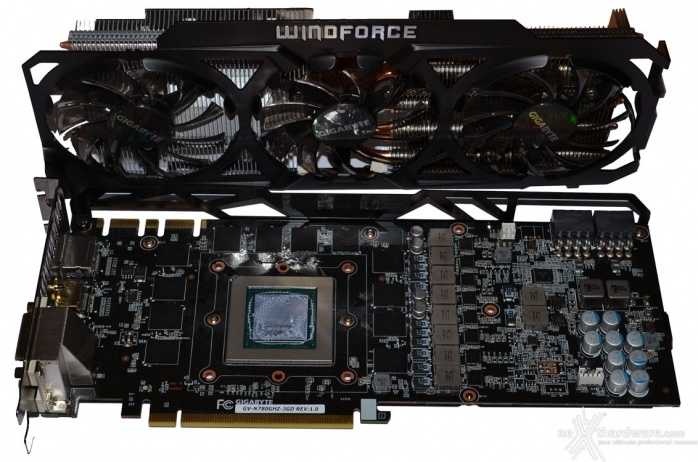 The card is built with one of the best air cooling solution, not to mention that the metal shroud and aluminum backplate ads to the rigidity of the card itself. Without overclocking the graphics card further, the card runs cool and silent even at full load.
The card is built with one of the best air cooling solution, not to mention that the metal shroud and aluminum backplate ads to the rigidity of the card itself. Without overclocking the graphics card further, the card runs cool and silent even at full load.
Also, giving the users the option to use a Red highlights or Gold is good. Although, I find those “stickers”/decals somewhat a gimmick and probably only adds to the overall cost of the card. Best stick with one color and let users do with their own customization. Anyway, the whole card itself feels pretty solid, somewhat heavy, but it feels like you’re holding a solid piece of hardware.
Performance wise, the GTX 780 Ti didn’t fail me specially in gaming. The overall gaming experience was fantastic. Put two of this in SLI and you will have a gaming PC ready to take on a 4K display gaming setup. However, I do feel that Asus could have provided a higher base and boost clock speeds, since competing brands have their GTX 780 Ti OC edition set at a higher clock speeds.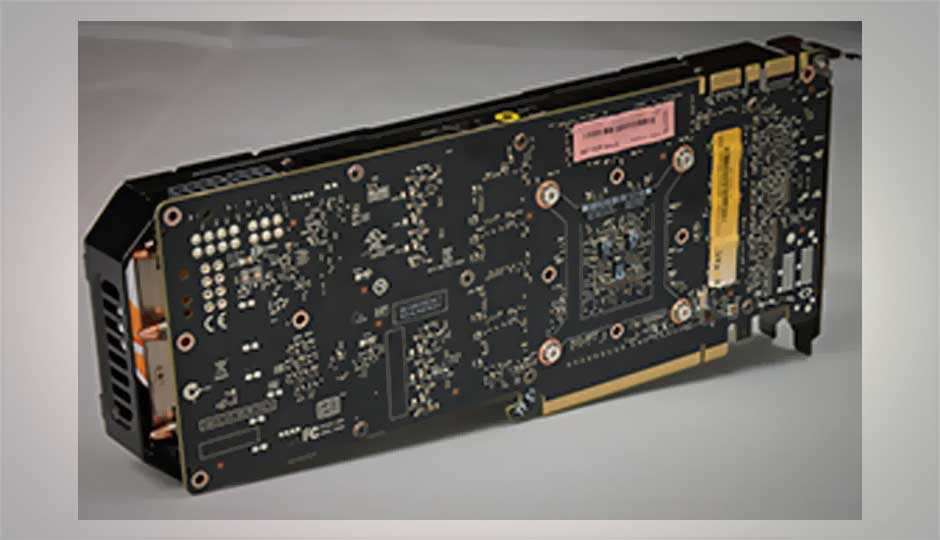 Perhaps the company didn’t do that since they were planning to release an ROG version of the GTX 780 Ti in the first place – the Asus ROG Matrix GTX 780 Ti, offering higher clock speeds and a more badass looking graphics card.
Perhaps the company didn’t do that since they were planning to release an ROG version of the GTX 780 Ti in the first place – the Asus ROG Matrix GTX 780 Ti, offering higher clock speeds and a more badass looking graphics card.
Overall, Asus did a great job with the Asus GTX 780 Ti DirectCU II OC. If you have the money and would want a good and solid graphics card without compromise, then you should consider getting this one.
EVGA GTX 780 Ti Classified Graphics Card Review
Team Green’s latest attempt at graphics card domination has landed… this time in the form of a GTX 780 Ti. EVGA has long been the number one seller of NVIDIA based products; and with all the enthusiast-level hardware they offer, it’s easy to see why. Today, we’ll be looking at yet another such enthusiast-level offering from EVGA – The GTX 780 Ti Classified. When EVGA slaps the “Classified” name on one of their GPUs, it usually means we get a graphics card loaded with features that performs great.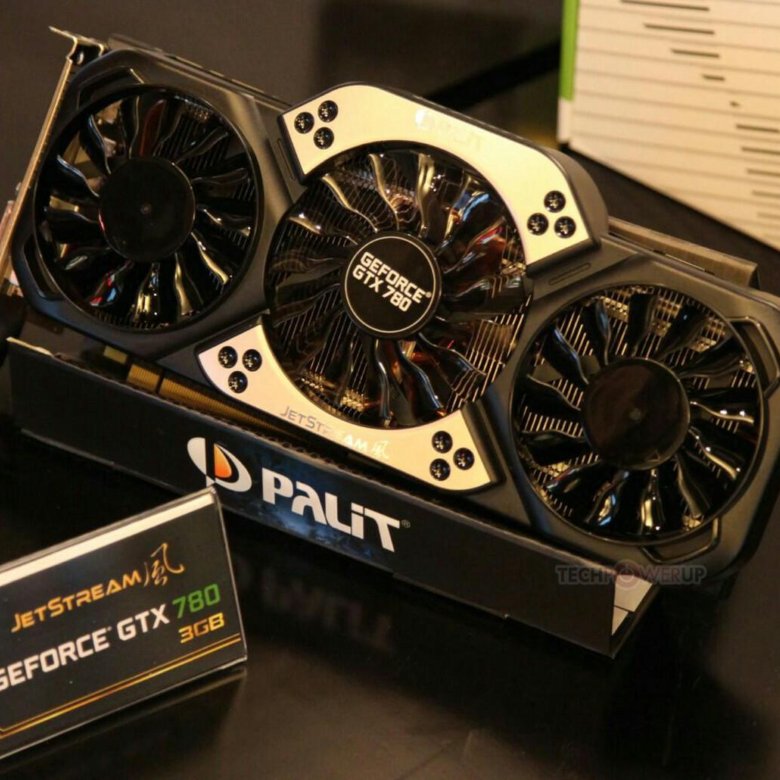 Let’s get going and see if this holds true this time around as well!
Let’s get going and see if this holds true this time around as well!
Specifications and Features
Here are the specifications attached to the GTX 780 Ti Classified as provided by the EVGA website.
| EVGA GTX 780 Ti Classified Specifications | |
| Performance |
|
| Memory |
|
| Interface |
|
| Resolution/Refresh |
|
| OS Support |
|
| Requirements |
|
So, what’s changed from the GTX 780 you might ask? First, the CUDA cores have been increased from 2304 to 2880, which is actually even higher than the GTX Titan’s 2688. Texture units also see an increase from the GTX 780’s 192 up to 240, which again is also more than the GTX Titan’s 224. The ROPs remain unchanged at 48. The GTX 780 Ti Classified has a built-in factory overclock of 1020 MHz base and 1085 MHz boost, but we all know the actual boost will be higher than that. During my testing, I recorded the actual boost clock at 1162 MHz when the card was under load. When compared to the reference design clock speed of 876 MHz base/928 MHz boost, you can see that’s quite an overclock. While the GTX 780 Ti Classified can’t match the GTX Titan’s 6 GB of memory, it does outdo it in raw MHz. The 3 GB of onboard memory is set at 1750 MHz (7000 MHz quad pumped), which is 250 MHz faster than the GTX 780 offers. A quick glance at GPU-Z confirms the above specifications.
Texture units also see an increase from the GTX 780’s 192 up to 240, which again is also more than the GTX Titan’s 224. The ROPs remain unchanged at 48. The GTX 780 Ti Classified has a built-in factory overclock of 1020 MHz base and 1085 MHz boost, but we all know the actual boost will be higher than that. During my testing, I recorded the actual boost clock at 1162 MHz when the card was under load. When compared to the reference design clock speed of 876 MHz base/928 MHz boost, you can see that’s quite an overclock. While the GTX 780 Ti Classified can’t match the GTX Titan’s 6 GB of memory, it does outdo it in raw MHz. The 3 GB of onboard memory is set at 1750 MHz (7000 MHz quad pumped), which is 250 MHz faster than the GTX 780 offers. A quick glance at GPU-Z confirms the above specifications.
The key features EVGA lists are mostly related to the NVIDIA technologies included with most Kepler-based GPUs. There are also a few unique items EVGA has added to the card.
Key Features
|
EVGA Features
|
The EVGA GTX 780 Ti Classified certainly appears to have the beast-like features and specifications we’re accustomed to seeing on a Classified labeled video card, so let’s get this thing on a bench and have a look around!
Packaging and First Look
EVGA is not one of those companies that goes overboard with marketing on their boxes. On the front, you get the basics as to what’s inside, along with a couple high-level features printed across the top. On the back, you’ll find the key features just as we have them listed above. They also include a picture of the display outputs and a multilingual list of the key features. The box sides are home to additional branding, a few of EVGA’s product accomplishments, and another multilingual list of several specifications.
On the front, you get the basics as to what’s inside, along with a couple high-level features printed across the top. On the back, you’ll find the key features just as we have them listed above. They also include a picture of the display outputs and a multilingual list of the key features. The box sides are home to additional branding, a few of EVGA’s product accomplishments, and another multilingual list of several specifications.
This slideshow requires JavaScript.
Opening the box reveals a white cardboard insert that’s used to hold the accessories, and below that is a stout foam container to house the card itself. There is a lot of documentation included in the accessories, along with two 8-pin PCI-E power adapters, a DVI to VGA adapter, driver and software disc, stickers, and a case badge.
This slideshow requires JavaScript.
Photo Op
Before we get to dissecting the GTX 780 Ti Classified, here are a few glamour shots for you to peruse through. I really like the clean lines and absence of gaudy “bling” effects found on so many of today’s GPUs… less is more in this case.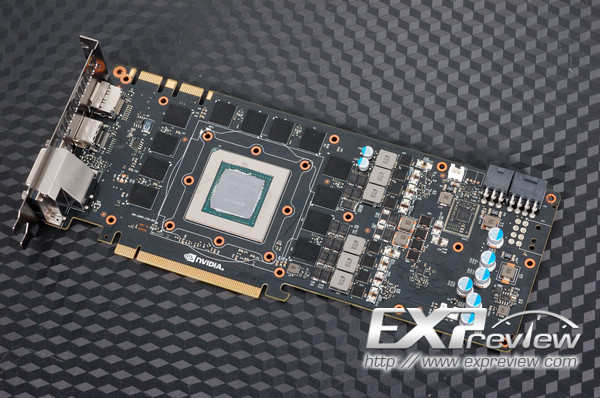
|
EVGA GTX 780 Ti Classified |
|
|
EVGA GTX 780 Ti Classified |
EVGA GTX 780 Ti Classified |
|
EVGA GTX 780 Ti Classified |
EVGA GTX 780 Ti Classified |
|
EVGA GTX 780 Ti Classified |
EVGA GTX 780 Ti Classified |
The EVGA GTX 780 Ti Classified – Up Close
To remove the ACX cooler, there are four spring loaded screws to remove on the back of the card. Once the ACX cooler is separated from the PCB, we can see the nickel plated copper block making good contact with the GPU. The aluminum support plate was removed by relieving an additional 15 screws at the back of the card. The support plate also doubles as a heatsink for the MOSFETs and memory ICs. All the thermal pads attached to the aluminum plate were found to be making excellent contact with their contact points.
|
ACX Cooler Mounting Screws |
ACX Cooler Removed |
|
Aluminum Heatsink Place Removed |
Aluminum Plate Up Close |
The ACX cooler uses a six heatpipe design that passes through an aluminum fin stack. Past experience with the ACX cooler has always resulted in excellent air cooling, and I expect that won’t change this time around either. EVGA claims a 40% increase in heatsink volume, which they say correlates to 15% better cooling of the GPU and memory. The dual ball bearing fans are said to offer a 4X longer lifespan than competitors’ sleeved bearing fans. EVGA also touts the fans as being easy on the ears and providing 15% quieter operation. The fan blades themselves are specially designed to be 700% stronger and 15% lighter weight, and as such, require less power to operate. We’ll assume EVGA is using the reference card as their comparison basis for all of these claims.
Past experience with the ACX cooler has always resulted in excellent air cooling, and I expect that won’t change this time around either. EVGA claims a 40% increase in heatsink volume, which they say correlates to 15% better cooling of the GPU and memory. The dual ball bearing fans are said to offer a 4X longer lifespan than competitors’ sleeved bearing fans. EVGA also touts the fans as being easy on the ears and providing 15% quieter operation. The fan blades themselves are specially designed to be 700% stronger and 15% lighter weight, and as such, require less power to operate. We’ll assume EVGA is using the reference card as their comparison basis for all of these claims.
|
ACX Cooler |
|
|
ACX Cooler Side View |
ACX Cooler Side View |
With the card stripped down to the bare PCB, we can get a good look at the massive power delivery the GTX 780 Ti Classified offers. There are 14 power phases dedicated to the GPU and 3 more dedicated to the memory. That’s a pretty darn impressive power delivery scheme by anyone’s standards.
That’s a pretty darn impressive power delivery scheme by anyone’s standards.
|
Power Delivery |
Power Delivery |
|
Power Delivery |
Power Delivery |
Having a look at the display output area, we see there are two DVI (DVI-I & DVI-D), one HDMI, and one DisplayPort 1.2 connectors. You can hook a total of four concurrent displays to the card. Along the top edge of the card, we see it requires dual 8-pin power cables to operate. Next to the 8-pin power connectors, we find the connection blocks for the EVBot and Probe-It. Also located here is the dual BIOS switch, which when thrown over to the secondary BIOS will give you a slightly higher power target limit of 115%.
|
Display Connections |
Top Edge Features |
That massive power delivery section we showed you earlier is controlled by the CHiL CHL8318 VRM, which is a popular choice among enthusiasts and overclockers. I know many of you are interested in the memory ICs this card uses, and I’m pleased to see that Hynix was chosen. In this case, the H5GQ2h34AFR-R2C GDDR5 ICs are used, which carry a speed rating of 7000 MHz (quad pumped) at 1.6 V. EVGA took full advantage of the memory’s speed capabilities and set it to its maximum rated speed right out of the box. We’ll see if we can push it beyond that later in the review. And finally, the last image below is a close-up shot of the Kepler GK110 GPU core.
I know many of you are interested in the memory ICs this card uses, and I’m pleased to see that Hynix was chosen. In this case, the H5GQ2h34AFR-R2C GDDR5 ICs are used, which carry a speed rating of 7000 MHz (quad pumped) at 1.6 V. EVGA took full advantage of the memory’s speed capabilities and set it to its maximum rated speed right out of the box. We’ll see if we can push it beyond that later in the review. And finally, the last image below is a close-up shot of the Kepler GK110 GPU core.
|
CHiL VRM |
Hynix Memory |
|
Meet the Kepler GK110 |
|
Included Software
EVGA’s PrecisionX software has evolved into quite a robust overclocking tool over the past couple of years. Its user-friendly interface and integration with RivaTuner statistic server give you total control over the video card. From overclocking to monitoring and fan control, everything you need is there. Also available is EVGA’s OC Scanner utility, which can be used for overclock stability testing. Once installed, OC Scanner can be launched right from the PrecisionX interface by simply clicking the “test” button.
Once installed, OC Scanner can be launched right from the PrecisionX interface by simply clicking the “test” button.
PrecisionX Features
- GPU and Memory Frequency/Clock Offset
- Power Target Control (GeForce GTX TITAN / 700 / 600)
- Temperature Target Control (GeForce GTX TITAN / 700)
- Pixel Clock Overclocking – OC your refresh rate!
- Frame Rate Target Control
- GPU Voltage Adjustment + Overvoltage (GeForce GTX TITAN / 700)
- Custom Fan Control/Fan Curve
- Profiling system allowing up to 10 profiles with hotkey
- Robust monitoring allowing ingame, system tray and/or Logitech LCD monitoring
- In game screenshot hotkey, supports BMP, PNG and JPG formats
- Custom skins including ones created by the EVGA community!
- Support for wireless Bluetooth overclocking via custom Android app
- Multi-language support: English, Dutch, French, Traditional Chinese, Japanese, Korean, Polish, Russian, Spanish, Portuguese
|
EVGA PrecisionX Software |
|
EVGA OC Scanner Software |
Performance and Overclocking
Test System
| Motherboard | ASUS Maximus VI Formula |
| CPU | Intel i7 4770K Haswell |
| Memory | G.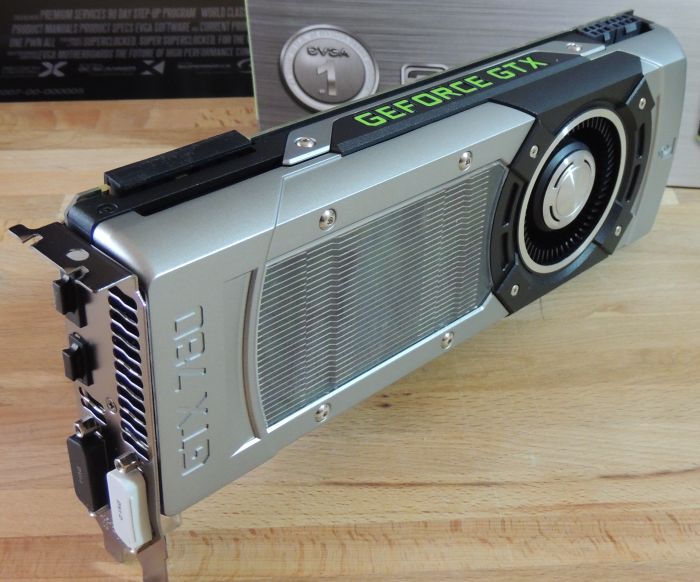 SKill TridentX DD3-2666 MHz 2x4GB SKill TridentX DD3-2666 MHz 2x4GB |
| SSD | Samsung EVO 500 GB SSD |
| Power Supply | Corsair HX1050 Professional Series |
| Video Card | EVGA GTX 780 Ti Classified w/ACX Cooler |
| Cooling | Swiftech Apogee HD CPU Water Block – 360 mm Radiator – MCP35X Pump |
Overclocking for Stability
The EVGA GTX 780 Ti offers the Double BIOS feature like several other of their higher-end video cards. The BIOS switch can be left in the normal position or moved over to the LN2 position for a slightly higher power target limit of 115%. That’s not much of an increase, so I would recommend just throwing the switch to LN2 mode from the start. One of the great things about buying into one of EVGA’s high-end graphics cards is the enthusiast community built around them. When I reviewed the GTX 780 Classified a few months ago, I found a voltage control utility and several 3rd party BIOS files to try out.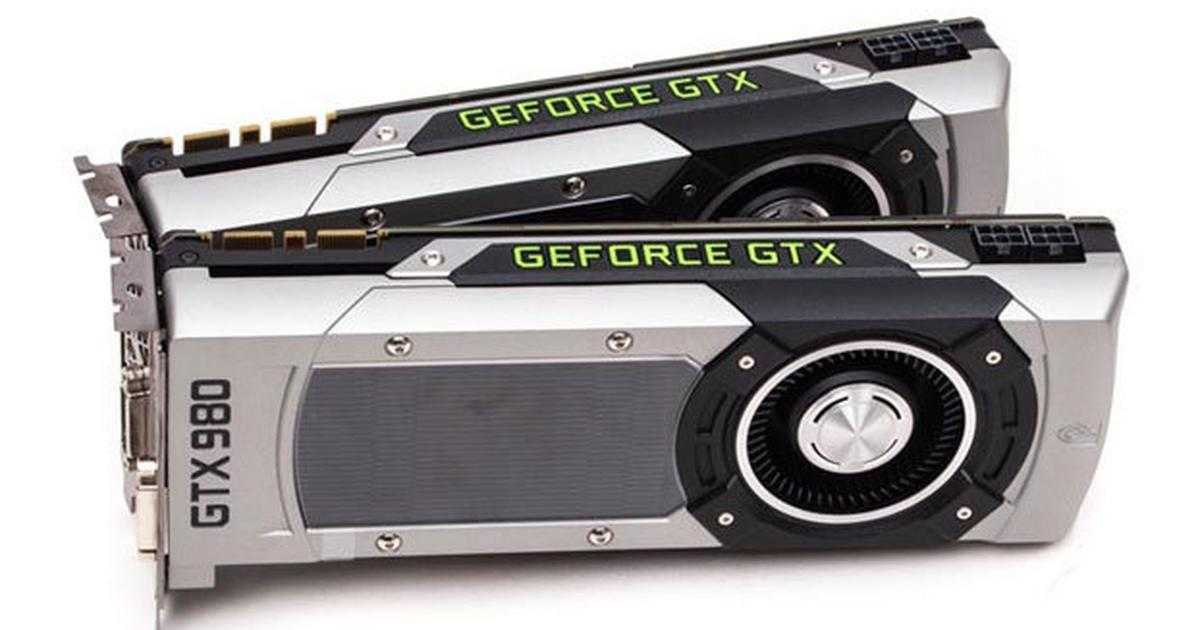 Things are looking good for the GTX 780 Ti Classified in this regard too, and there are already a few 3rd party BIOS files and a new voltage adjustment tool available. The new tool allows the GPU voltage to be pumped as high as 1.5 V, but we won’t be using a voltage that high when using air cooling.
Things are looking good for the GTX 780 Ti Classified in this regard too, and there are already a few 3rd party BIOS files and a new voltage adjustment tool available. The new tool allows the GPU voltage to be pumped as high as 1.5 V, but we won’t be using a voltage that high when using air cooling.
As far as any meaningful overclocking goes, you’ll need to jump right in and use the Classified Voltage Tool and a 3rd party modified BIOS. EVGA applied a hefty overclock at the factory on this card (just short of 150 MHz), so there is little to no room left without applying more voltage than PrecisionX allows. That’s certainly not EVGA’s fault… we all know NVIDIA has put the clamps down where additional voltage is concerned. On the plus side of all this, EVGA provides a stout overclock right out of the box without you having to do anything. The down side is that the overclockers among us will have to take the steps outlined above to get the most from this card. But, hey… that’s what living on the technology edge is all about, right? So, armed with our voltage tool and a modified BIOS, let’s see what we can do.
After spending several hours with the modified BIOS and voltage tool, a couple of items became crystal clear. While the ACX cooler does a fine job, temperatures are going to get in your way pretty quickly once you start adding voltage in the 1.35 V range. The other thing I noticed is that this card doesn’t seem to respond to well to voltage settings over 1.35 V… at least on air cooling anyway. By respond, I mean adding voltage past 1.35 V didn’t allow me to take the GPU speed any further, even though the temperature threshold was not breached. I even took the system into a much cooler environment to ensure the temperatures stayed under the throttling point. So, after all the testing I performed, I managed to get the GPU raised an additional 140 MHz using the voltage tool set to 1.35 V. This resulted in an actual boost clock of 1293 MHz. The memory topped out at 2000 MHz (8000 MHz Quad Pumped) using 1.7 V, which is a pretty stout 250 MHz increase. As I stated before though, you have to keep in mind the high factory overclock this card comes with. With EVGA’s factory overclock, plus the additional overclock I added… we are pushing almost 300 MHz over reference speeds. That’s actually pretty impressive when you stop to think about it.
With EVGA’s factory overclock, plus the additional overclock I added… we are pushing almost 300 MHz over reference speeds. That’s actually pretty impressive when you stop to think about it.
I pretty much got everything I could from this card in its out-of-box form, so consider the results below your “Pushing the Limits” numbers too. I’m sure the card can be pushed quite a bit further under water, or if taken cold (LN2). Speaking of water cooling, EVGA tells us water blocks that fit the GTX 780 Classified will transfer right over and work on this card too.
|
HWBot Heave at 1293 MHz Actual / 2000 MHz Memory |
|
3DMark Fire Strike 1293 Actual Boost / 2000 MHz Memory |
Benchmarking Methods
We’ve had a recent change in the benchmarks we use for games, but our synthetic tests have pretty much remained the same. Below is the down and dirty explanation of what we do, but please visit our GPU Testing Procedure page for a detailed rundown of the process.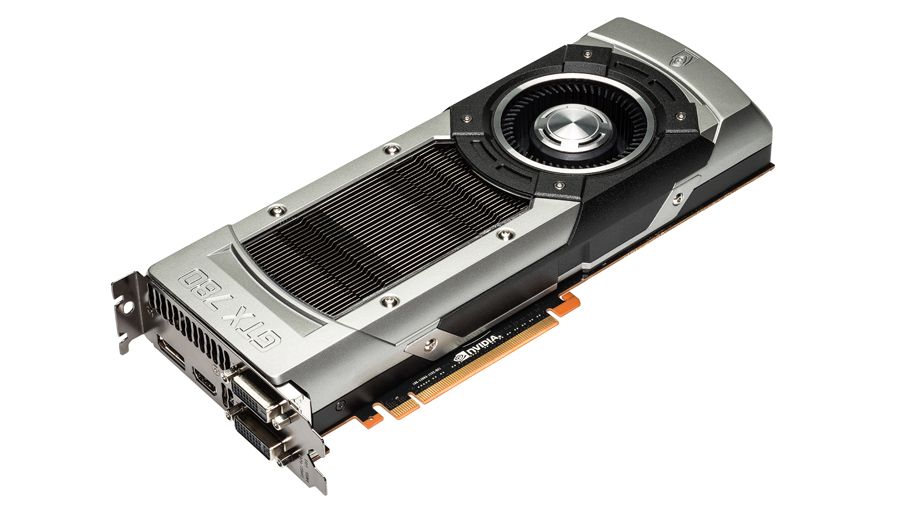
Minimum System Requirements
- i7 4770K @ 4 GHz
- Dual Channel DDR3-1866 9-9-9-24
- GPU @ stock and overclocked
- Monitor capable of 1920×1080
Synthetic Tests
- 3DMark Vantage – DirectX 10 benchmark running at 1280X1024 – Performance preset.
- 3DMark 11 – DirectX 11 benchmark running at 1280X720 – Performance preset.
- 3DMark Fire Strike – DirectX 11 benchmark running 1920X1080 – Standard test (not extreme).
- Unigine Heaven (HWBot version) – DX11 Benchmark – Extreme setting.
Game Tests
- Batman: Arkham Origins – 1920X1080, 8x MSAA, PhysX off, V-Sync off, The rest set to on or DX11 enhanced.
- Battlefield 4 – 1920X1080, Ultra Preset, V-Sync off.
- Bioshock Infinite – 1920X1080, Ultra DX11 preset, DOF on.
- Crysis 3 – 1920X1080, Very high settings, 16x AF, 8x MSAA, V-Sync off.

- Final Fantasy XIV: A Realm Reborn – 1920X1080, Maximum preset.
- Grid 2 – 1920X1080, 8x MSAA, Intel specific options off, Everything else set to highest available option.
- Metro Last Light – 1920X1080, DX11 preset, SSAA on, Tessellation very high, PhysX off.
Beginning with the synthetic benchmarks, you’ll see the EVGA GTX 780 Ti pretty much wipes the floor with everything else in the comparison graphs. This card really pumped out some great numbers here. The only competitor that came even remotely close was the ASUS MARS 760, which is a dual GPU card running in SLI mode.
|
HWBot Heaven Results |
|
3DMark Fire Strike Results |
|
3DMark 11 Results |
|
3DMark Vantage Results |
Moving over to our game benchmarks, we see a similar pattern to above hold true here as well. This card scaled extremely well when overclocked and threw out some jaw dropping numbers in some of these games.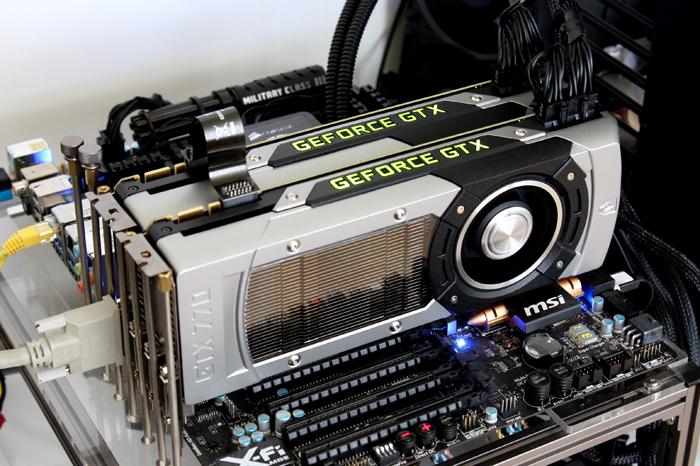 Here again, only the ASUS MARS 760 with its dual GPUs was close at all. My apologies for the missing data in the Grid 2 results, we’re still working on getting everything tested with our new suite of games.
Here again, only the ASUS MARS 760 with its dual GPUs was close at all. My apologies for the missing data in the Grid 2 results, we’re still working on getting everything tested with our new suite of games.
|
Batman: Arkham Origin Results |
|
Battlefield 4 Results |
|
Bioshock Infinite Results |
|
Crysis 3 Results |
|
Final Fantasy XIV: A Realm Reborn Results |
|
Grid 2 Results |
|
Metro: Last Light Results |
I think you’ll agree the EVGA GTX 780 Ti Classified has no problem playing today’s modern game titles at their maximum settings. Even the most demanding games in our suite (think Metro LL and Crysis 3) were no match for the power of this card… it easily flew right through them all.
NVIDIA Surround Testing
We didn’t have NVIDIA Surround results for the EVGA GTX 780 Classified, but we do for the ASUS GTX 780 DirectCU II. So, we’ll swap the two for comparison in the graphs below. Just as expected, the GTX 780 Ti Classified swept the field in our NVIDIA surround testing. Three of the games we tested showed very playable frame rates, while Crysis 3 and Metro: Last Light were below the 30 FPS threshold we call playable. Those two games will have to have a few settings reduced to reach that 30 FPS mark.
So, we’ll swap the two for comparison in the graphs below. Just as expected, the GTX 780 Ti Classified swept the field in our NVIDIA surround testing. Three of the games we tested showed very playable frame rates, while Crysis 3 and Metro: Last Light were below the 30 FPS threshold we call playable. Those two games will have to have a few settings reduced to reach that 30 FPS mark.
NVIDIA Surround Results
Power Consumption and Temperatures
Our temperature testing procedure requires running HWBot Heaven at both stock and overclocked settings. The results are normalized to 25 °C ambient. I ran tests with the fan control set to auto and again with the fan speed set to 100%
The ACX cooler did an admirable job of keeping the card cool, but you’ll need to ramp the fan speed all the way up when you start pouring the voltage to it. With the fan left on auto control, it does just fine under stock conditions. Auto fan control won’t cope with the 1.35 V I used for our overclock, so you’ll have to ramp it up to 100% to keep it from crashing.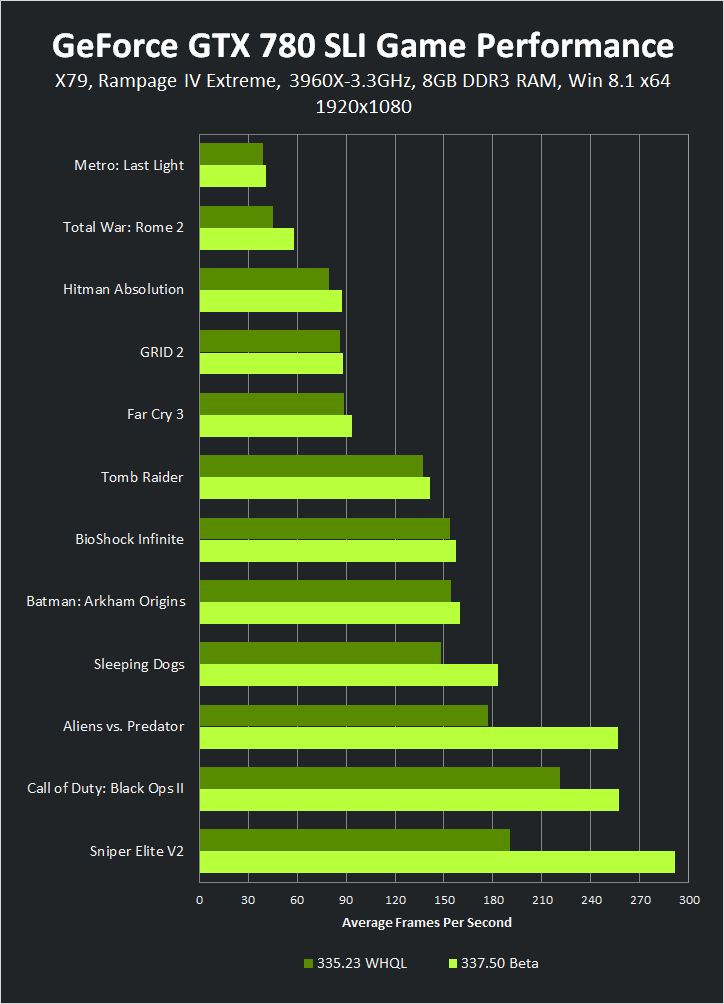 No big surprise there though… that’s a lot of voltage for any air cooler to handle. The ACX gets a little noisy when ramped up to full speed, but not what I would call annoyingly so. However, up to around 50% speed, it’s very quiet. The N/A in the graph below simply means the test was not able to complete before the card overheated and crashed.
No big surprise there though… that’s a lot of voltage for any air cooler to handle. The ACX gets a little noisy when ramped up to full speed, but not what I would call annoyingly so. However, up to around 50% speed, it’s very quiet. The N/A in the graph below simply means the test was not able to complete before the card overheated and crashed.
Temperature Testing Results
Our power consumption testing is done with a Kill-a-Watt with the wattage usage recorded at idle and load. We run both HWBot Heaven and 3DMark 11 (Combined Physics Test) to hopefully get the maximum power draw the video card can produce. I tend to take this testing one step further and also provide results while the video card is overclocked. Keep in mind, the results are total system draw and not just the video card.
EVGA recommends a power supply with a minimum of 600 watts; but as you can see below, that might be a little tight once you start overclocking. If you plan on using this card at stock, a quality 600 watt power supply would probably be fine. But, who buys a card like this to run it at stock? I would venture to say the answer to that question is… wait for it… nobody!
But, who buys a card like this to run it at stock? I would venture to say the answer to that question is… wait for it… nobody!
Power Consumption Results
Conclusion
With the release of the GTX 780 Ti series, NVIDIA currently has the fastest GPU offering there is. From what I’ve seen, this also includes AMD’s R9 290X when both cards are compared in their reference design configuration. In fact, EVGA claims the GTX 780 Ti Classified is the best gaming graphics card on the planet. Unfortunately, owning what could very well be the fastest GPU available comes with a premium price too. When the EVGA store has the cards in stock, they are $50 less than Newegg’s $799.99 price. It’s all a matter of supply and demand, and people stand in line to buy EVGA’s top-end Classified video cards. I’ve seen these cards come available at the EVGA store a couple of times, and they usually sell out within hours. It wouldn’t surprise me if Newegg raises the price when they know the EVGA store is out of stock… supply and demand.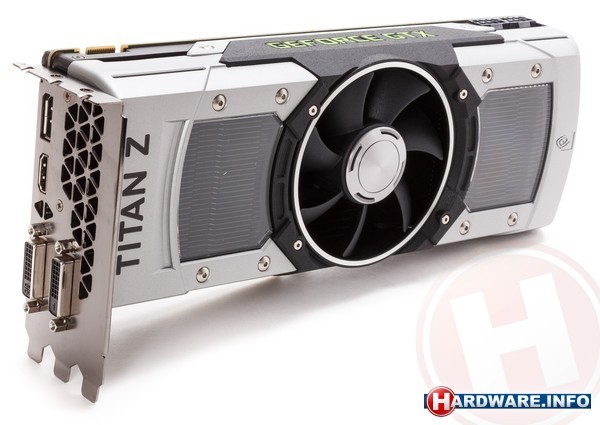 NVIDIA always attaches a premium price to a card that is the fastest available at the time of release… always have and probably always will. As soon as AMD comes out with something faster, the price will undoubtedly drop. We bore witness to this a few months ago when the release of AMD’s R9/R7 cards forced NVIDIA to reduce prices on competing models. The other thing NVIDIA and EVGA are taking advantage of is the scarce availability of non-reference R9 290X cards on the market. Given the reference design R9 290X price of around $629, you can probably expect partner cards with factory overclocks and proprietary coolers to hit the market at roughly $650. That certainly narrows the price gap, and EVGA and NVIDIA are banking on customer loyalty and those that simply must have the best there is to drive sales. So, in the end, you can’t really knock the price if it’s the fastest GPU available and people are willing to pay the premium, which by all accounts they are… supply and demand.
NVIDIA always attaches a premium price to a card that is the fastest available at the time of release… always have and probably always will. As soon as AMD comes out with something faster, the price will undoubtedly drop. We bore witness to this a few months ago when the release of AMD’s R9/R7 cards forced NVIDIA to reduce prices on competing models. The other thing NVIDIA and EVGA are taking advantage of is the scarce availability of non-reference R9 290X cards on the market. Given the reference design R9 290X price of around $629, you can probably expect partner cards with factory overclocks and proprietary coolers to hit the market at roughly $650. That certainly narrows the price gap, and EVGA and NVIDIA are banking on customer loyalty and those that simply must have the best there is to drive sales. So, in the end, you can’t really knock the price if it’s the fastest GPU available and people are willing to pay the premium, which by all accounts they are… supply and demand.
On the performance side, the GTX 780 Ti Classified certainly delivers an impressive level of performance.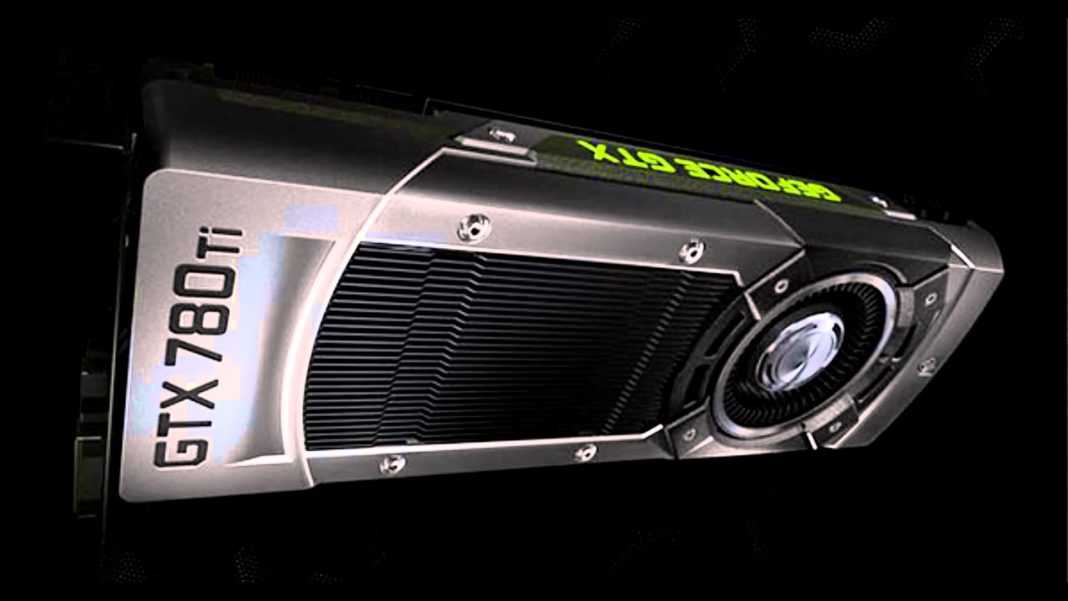 EVGA did a great job with the applied factory overclock and took the card right near its limit, while still adhering to NVIDIAs voltage constraints. Once you get past those NVIDIA constraints with a modified BIOS and the voltage tool, you still have a fair amount of additional overclocking headroom to work with. With the dual BIOS switch, you’re free to experiment with 3rd party firmware and still have the security of always having a working BIOS should things go wrong.
EVGA did a great job with the applied factory overclock and took the card right near its limit, while still adhering to NVIDIAs voltage constraints. Once you get past those NVIDIA constraints with a modified BIOS and the voltage tool, you still have a fair amount of additional overclocking headroom to work with. With the dual BIOS switch, you’re free to experiment with 3rd party firmware and still have the security of always having a working BIOS should things go wrong.
The ACX cooler does a great job keeping the card cooled down, especially when you ramp it up to deal with added voltage. Depending on the environment you have the card installed in, it should be able to handle up to 1.3 V for almost everyone and perhaps even more. Aesthetically speaking, the ACX Cooler tops off the card with a clean and sleek look that the vast majority of people will appreciate. The black with shiny silver accents is neutral enough to easily integrate into just about any system’s color scheme.
In the end, we have a powerhouse of a video card in the EVGA GTX 780 Ti Classified. The card simply plowed through every benchmark we threw at it and did so with impressive results. Sure, it might be a little on the spendy side, but you know what they say… if you want the best, you have to pay to play.
The card simply plowed through every benchmark we threw at it and did so with impressive results. Sure, it might be a little on the spendy side, but you know what they say… if you want the best, you have to pay to play.
Click the stamp for an explanation of what this means.
–Dino DeCesari (Lvcoyote)
Goliath vs David (page 3)
Dota 2
Settings:
- Resolution: 1920 x 1080;
- Texture quality: high;
- Effect quality: high;
- Shadow quality: very high;
- Additional settings: All parameters are activated.
Dota 2
Frames/s
Min | average | Max
Please enable JavaScript to see graphs
Just Cause 3
Settings:
- Resolution: 1920 x 1080;
- Anisotropic filtering: 16X;
- Anti-Aliasing: SMAA T2X;
- Texture quality: very high;
- Water detail: very fine;
- Water tessellation: on;
- Water detail: high;
- Shadow quality: very high;
- SSAO: incl.

Just Cause 3
Frames/s
Min | average | Max
Please enable JavaScript to see graphs
recommendations
Need for Speed 2016
Settings:
- Resolution: 1920 x 1080;
- Texture quality: ultra:
- Shadow quality: ultra;
- Global illumination: HBAO.
Need for Speed 2016
Frames/s
Min | average | Max
Please enable JavaScript to see graphs
Rise of the Tomb Raider
Settings:
- Resolution: 1920 x 1080;
- DirectX 12;
- Antialiasing: SSAA 4x;
- Setting preset: high.
Rise of the Tomb Raider
Frames/s
Min | average | Max
Please enable JavaScript to see graphs
Witcher 3
Settings:
- Resolution: 1920 x 1080;
- Graphic quality: beyond;
- Nvidia HairWorks: off;
- Nvidia HairWorks AA: 0;
- Additional graphics settings: extreme.
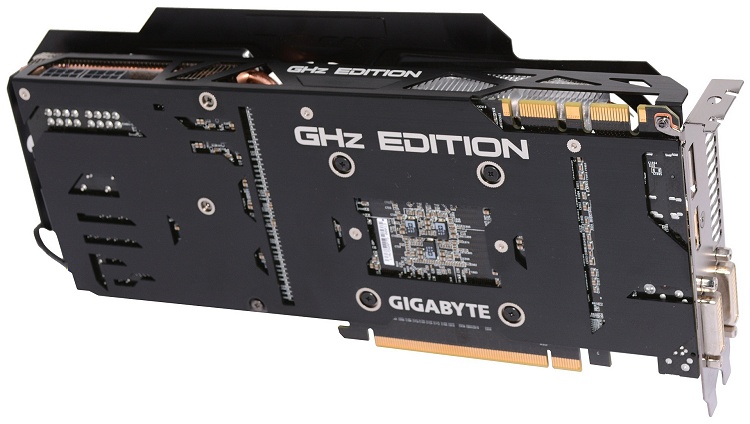
Witcher 3
Frames/s
Min | average | Max
Please enable JavaScript to see graphs
World of Tanks
Settings:
- Resolution: 1920 x 1080;
- Graphics: improved;
- Graphics settings: maximum;
- 3D render resolution: 100%;
- Antialiasing: FXAA.
World of Tanks
Frames/s
Min | average | Max
Please enable JavaScript to see graphs
Electricity consumption level
Graph of electricity consumption of the entire stand depending on the frequencies of video cards and the operating voltage of the GPU.
System power consumption, W
Power supply outlet
Plain | Heaven Benchmark 4.0 | MSI Kombustor
Please enable JavaScript to see graphs
2D power consumption measured with system idle (desktop).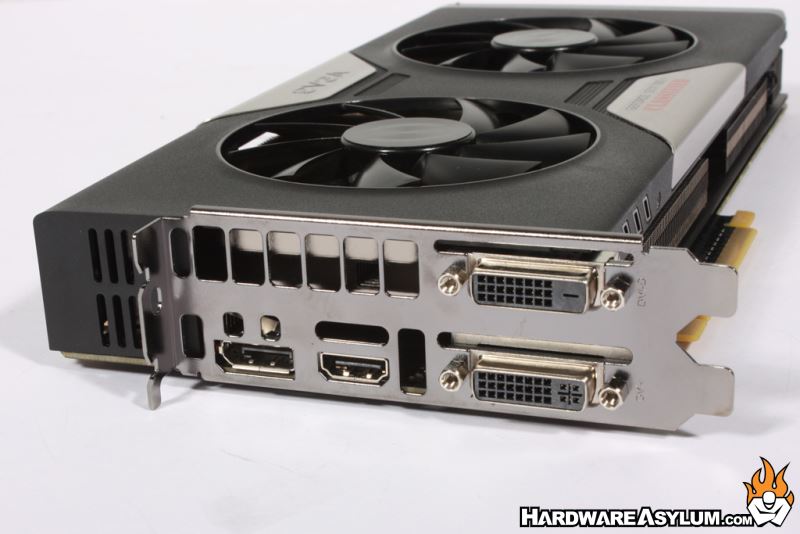 Testing in Heaven BenchMark 4.0 was carried out at the following settings — quality: ultra, tessellation: extreme, AA8x, 1920 x 1080; MSI Kombustor — 2xMSAA, 1920 x 1080.
Testing in Heaven BenchMark 4.0 was carried out at the following settings — quality: ultra, tessellation: extreme, AA8x, 1920 x 1080; MSI Kombustor — 2xMSAA, 1920 x 1080.
Conclusion
We didn’t want to show «heavyweight boxer beating babies» but the development of the computer industry in just a few years. It is clear that the engineers have done a great job, and the new Nvidia graphics cards have taken a big step forward both in quantity and quality, which is clearly demonstrated by the difference in performance between the GeForce GTX 780 Ti and the GeForce GTX 1080 Ti.
I’ll repeat my last words: with the release of the «thousandth series» of GeForce, the performance has exceeded the needs, and the top solutions provide high frames per second in the usual Full HD resolution. As for the use of new products in 4K or with virtual reality glasses, this is a topic for a separate study. One more conclusion can be drawn: video cards of the GeForce GTX 780 Ti level are still in service and are not going to leave the battle ranks.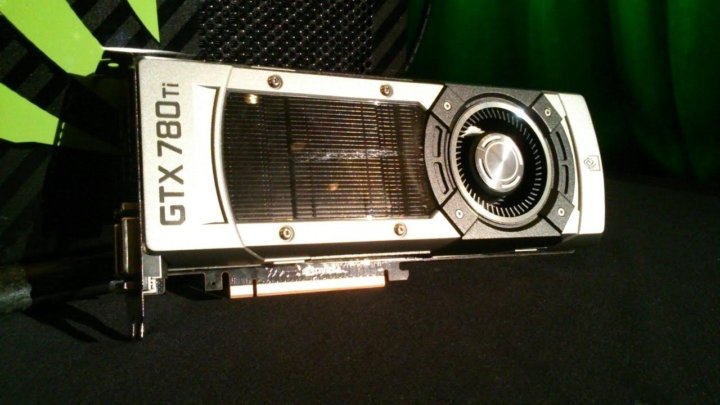
But perhaps you are an old-school enthusiast and are disappointed not to see the GeForce 8800 mentioned at the beginning in the test results? It’s not worth getting upset. We have a surprise in store for you: I have a couple of GeForce 79 graphics accelerators at my disposal among the most memorable models.00 GTO, the reference version of the Radeon HD 3870, and several other graphics cards, including the Radeon X800 and Radeon X1650. Maybe they would like reviews? What do you think?
Nefedov Petr aka
Go.d-bq
I express my special gratitude for the preparation of the material donnerjack .
Subscribe to our channel in Yandex.Zen or telegram channel @overclockers_news — these are convenient ways to follow new materials on the site. With pictures, extended descriptions and no ads.
GeForce GTX 780 Ti [in 12 benchmarks]
NVIDIA
GeForce GTX 780 Ti
- PCIe 3.
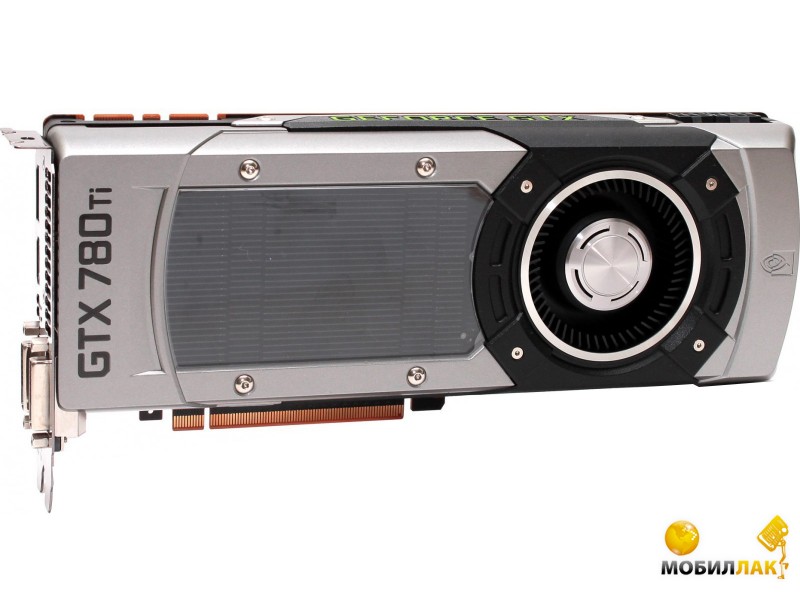 0 x16 interface
0 x16 interface - Core frequency 875
- Video memory size 3072 MB
- Memory type GDDR5
- Memory frequency 7.0 Gbps
- Maximum resolution
Description
NVIDIA started GeForce GTX 780 Ti sales on November 7, 2013 at a suggested price of 699$. This is a desktop video card based on the Kepler architecture and 28 nm manufacturing process, primarily aimed at gamers. It has 3 GB of GDDR5 memory at 7.0 Gb/s, and coupled with a 384-bit interface, this creates a bandwidth of 336 Gb/s.
In terms of compatibility, this is a dual-slot PCIe 3.0 x16 card. The length of the reference version is 26.7 cm. An additional 1x 8-pin and 1x 6-pin power cable is required for connection, and the power consumption is 250 W.
It provides good performance in tests and games at the level of
31.79%
from the leader, which is the NVIDIA GeForce RTX 3090 Ti.
GeForce GTX
780 Ti
or
GeForce RTX
3090 Ti
General information 9999 (A100 SXM4)
Value for money
To obtain an index, we compare the characteristics of video cards and their cost, taking into account the cost of other cards.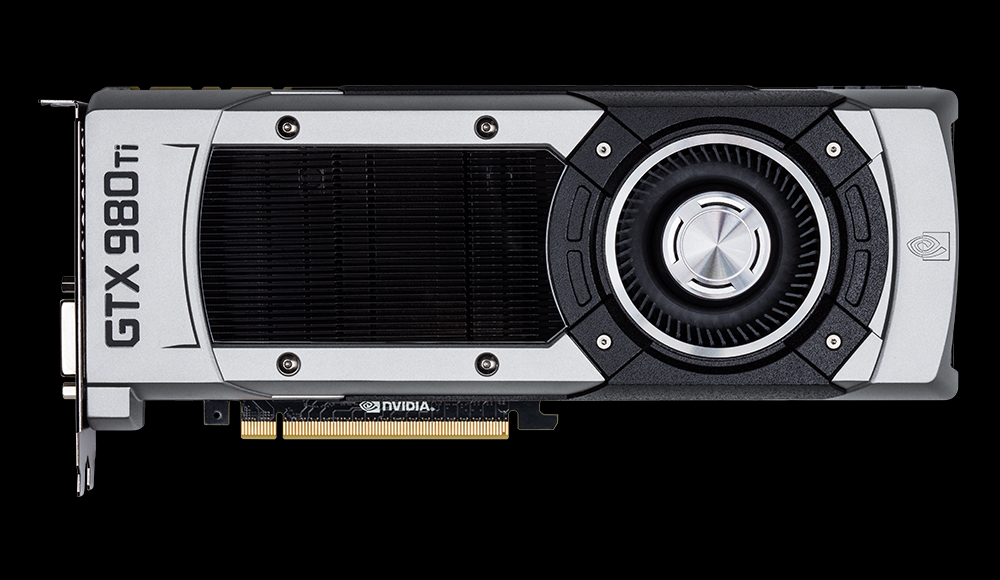
- 0
- 50
- 100
Features
GeForce GTX 780 Ti’s general performance parameters such as number of shaders, GPU core clock, manufacturing process, texturing and calculation speed. They indirectly speak about GeForce GTX 780 Ti’s performance, but for precise assessment you have to consider its benchmark and gaming test results.
OPERATIVE MOSCOMI
Parameters of memory installed on GeForce GTX 780 Ti — type, size, bus, frequency and bandwidth. For video cards built into the processor that do not have their own memory, a shared part of the RAM is used.
| Memory type | 336 GB/s | of 14400 (Radeon R7 M260) | |||||||||||||||||||||||||||||||||||||||||||||||||||||||||||||||||||||||||||||||||||||||||||||||||||||||||||||||||||||||||||||||||||||||||||||||||||||||||||||||||||||||||||||||||||||||||||||||||||||||||||||||||||||||||||||||||||||||||||||||||||||||||||||||||||||||||||||||||||||||||||||||||||||||||||||||||||||||||||||||||||||||||||||||||||||||||||||||||||||||||||||||||||||||||||||||||||||||||||||||||||||||||||||||||||||||||||||||||||||||||||||||||||||||||||||||||||||||||||||||||||||||||||||||
| Demeded memory | — 9030
| |
8 9000 9000 9000 9000 9000 9000 9000 9000 9000 9000
| |||||||||||||||||||||||||||||||||||||||||||||||||||||||||||||||||||||||||||||||||||||||||||||||||||||||||||||||||||||||||||||||||||||||||||||||||||||||||||||||||||||||||||||||||||||||||||||||||||||||||||||||||||||||||||||||||||||||||||||||||||||||||||||||||||||||||||||||||||||||||||||||||||||||||||||||||||||||||||||||||||||||||||||||||||||||||||||||||||||||||||||||||||||||||||||||||||||||||||||||||||||||||||||||||||||||||||||||||||||||||||||||||||||||||||||||||||||||||||||||||||||||||||||||
| Audio input for HDMI | internal |
9003 Technology
Technology solutions and APIs supported by GeForce GTX 780 Ti are listed here. You will need this information if your graphics card is required to support specific technologies.
| Blu Ray 3D | + | ||||||||||||||||||||||||||||||||||||||||||||||||||||||||||||||||||||||||||||||||||||||||||||||||||||||||||||||||||||||||||||||||||||||||||||||||||||||||||||||||||||||||||||||||||||||||||||||||||||||||||||||||||||||||||||||||||||||||||||||||||||||||||||||||||||||||||||||||||||||||||||||||||||||||||||||||||||||||||||||||||||||||||||||||||||||||||||||||||||||||||||||||||||||||||||||||||||||||||||||||||||||||||||||||||||||||||||||||||||||||||||||||||||||||||||||||||||||||||||||||||||||
3D Gaming0005
Overall benchmark performanceThis is our overall performance rating. We regularly improve our algorithms, but if you find any inconsistencies, feel free to speak up in the comments section, we usually fix problems quickly.
GTX 780 Ti
PassmarkThis is a very common benchmark included in the Passmark PerformanceTest package. He gives the card a thorough evaluation, running four separate tests for Direct3D versions 9, 10, 11, and 12 (the latter being done at 4K resolution whenever possible), and a few more tests using DirectCompute. Benchmark coverage: 26%
GTX 780 Ti 3DMark 11 Performance GPU3DMark 11 is Futuremark’s legacy DirectX 11 benchmark. He used four tests based on two scenes: one is several submarines exploring a sunken ship, the other is an abandoned temple deep in the jungle. All tests make extensive use of volumetric lighting and tessellation and, despite being run at 1280×720, are relatively heavy. Support for 3DMark 11 ended in January 2020 and is now being replaced by Time Spy. Benchmark coverage: 17%
GTX 780 Ti 3DMark Vantage Performance 3DMark Vantage is an outdated DirectX 10 benchmark. Benchmark coverage: 17%
GTX 780 Ti 3DMark Cloud Gate GPUCloud Gate is a legacy benchmark that uses DirectX 11 feature level 10, used to test home PCs and low-end laptops. It displays several scenes of some strange teleportation device launching spaceships into the unknown at a fixed resolution of 1280×720. As with the Ice Storm benchmark, it was deprecated in January 2020 and 3DMark Night Raid is now recommended instead. Benchmark coverage: 14%
GTX 780 Ti 3DMark Fire Strike ScoreBenchmark coverage: 14%
GTX 780 Ti 3DMark Fire Strike Graphics Fire Strike is a DirectX 11 benchmark for gaming PCs. Benchmark coverage: 14%
GTX 780 Ti GeekBench 5 OpenCLGeekbench 5 is a widely used benchmark for graphics cards that combines 11 different test scenarios. All of these scenarios are based on the direct use of the processing power of the GPU, without the use of 3D rendering. This option uses the Khronos Group’s OpenCL API. Benchmark coverage: 9%
GTX 780 Ti GeekBench 5 Vulkan Geekbench 5 is a widely used benchmark for graphics cards that combines 11 different test scenarios. All of these scenarios are based on the direct use of the processing power of the GPU, without the use of 3D rendering. This option uses the Vulkan API from AMD and the Khronos Group. Benchmark coverage: 5%
GTX 780 Ti GeekBench 5 CUDAGeekbench 5 is a widely used benchmark for graphics cards that combines 11 different test scenarios. All of these scenarios are based on the direct use of the processing power of the GPU, without the use of 3D rendering. This option uses NVIDIA’s CUDA API. Benchmark coverage: 5%
GTX 780 Ti Unigine Heaven 3.0This is an old DirectX 11 based benchmark using the Unigine 3D game engine from the Russian company of the same name. It depicts a medieval fantasy city spread over several floating islands. Version 3.0 was released in 2012 and was replaced by Heaven 4.0 in 2013, which introduced several minor improvements, including a newer version of the Unigine engine. Benchmark coverage: 5%
GTX 780 Ti Octane Render OctaneBench This is a dedicated benchmark for measuring graphics card performance in OctaneRender, which is a realistic GPU rendering engine created by OTOY Inc. Benchmark coverage: 4%
GTX 780 Ti Unigine Heaven 4.0This is an old DirectX 11 based benchmark, a newer version of Unigine 3.0 with relatively minor differences. It depicts a medieval fantasy city spread over several floating islands. The benchmark is still occasionally used despite its significant age, and it was released back in 2013. Benchmark coverage: 1%
GTX 780 Ti Mining hashrates
GeForce GTX 780 Ti performance in cryptocurrency mining. Usually the result is measured in mhash / s — the number of millions of solutions generated by the video card in one second.
Tests in gamesFPS in popular games on the GeForce GTX 780 Ti, as well as compliance with system requirements. Remember that the official requirements of the developers do not always match the data of real tests. Average FPSHere are the average FPS values for a large selection of popular games at various resolutions:
| |||||||||||||||||||||||||||||||||||||||||||||||||||||||||||||||||||||||||||||||||||||||||||||||||||||||||||||||||||||||||||||||||||||||||||||||||||||||||||||||||||||||||||||||||||||||||||||||||||||||||||||||||||||||||||||||||||||||||||||||||||||||||||||||||||||||||||||||||||||||||||||||||||||||||||||||||||||||||||||||||||||||||||||||||||||||||||||||||||||||||||||||||||||||||||||||||||||||||||||||||||||||||||||||||||||||||||||||||||||||||||||||||||||||||||||||||||||||||||||||||||||||

 0
0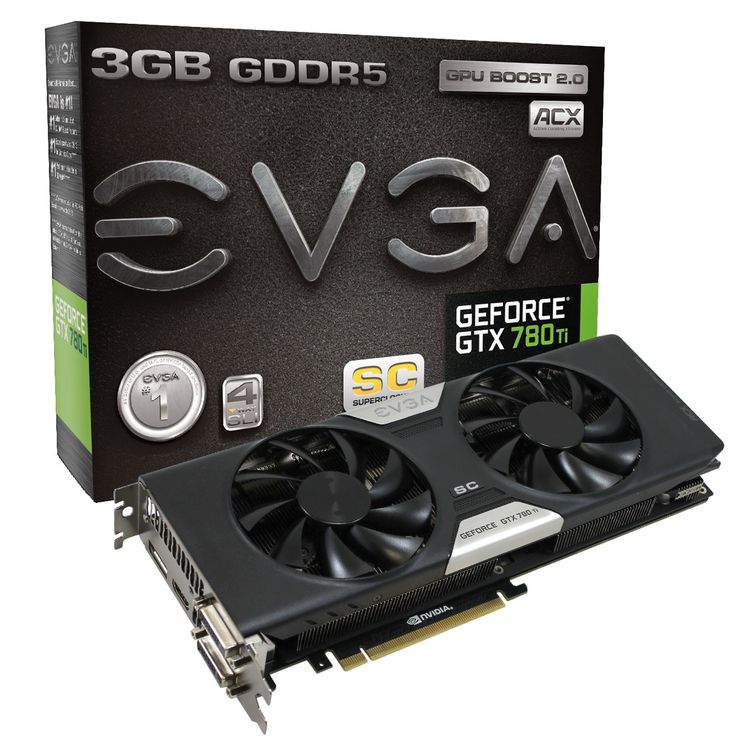 As a rule, this section is relevant only for desktop reference video cards, since for laptop ones the availability of certain video outputs depends on the laptop model.
As a rule, this section is relevant only for desktop reference video cards, since for laptop ones the availability of certain video outputs depends on the laptop model.  0
0 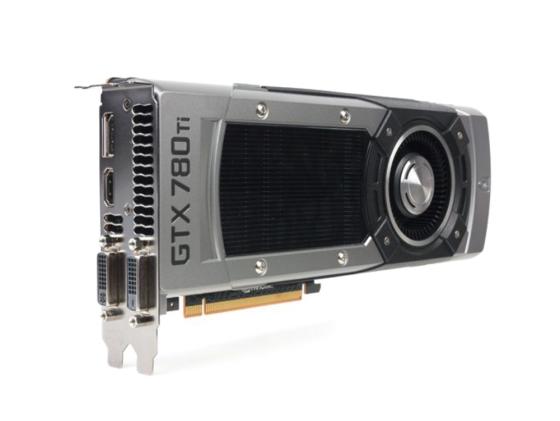 It loads the graphics card with two scenes, one of a girl running away from some kind of military base located in a sea cave, and the other of a space fleet attacking defenseless planet. Support for 3DMark Vantage was discontinued in April 2017 and it is now recommended to use the Time Spy benchmark instead.
It loads the graphics card with two scenes, one of a girl running away from some kind of military base located in a sea cave, and the other of a space fleet attacking defenseless planet. Support for 3DMark Vantage was discontinued in April 2017 and it is now recommended to use the Time Spy benchmark instead.  It features two separate tests showing a fight between a humanoid and a fiery creature that appears to be made of lava. Using resolution 1920×1080, Fire Strike shows quite realistic graphics and is quite demanding on hardware.
It features two separate tests showing a fight between a humanoid and a fiery creature that appears to be made of lava. Using resolution 1920×1080, Fire Strike shows quite realistic graphics and is quite demanding on hardware. 
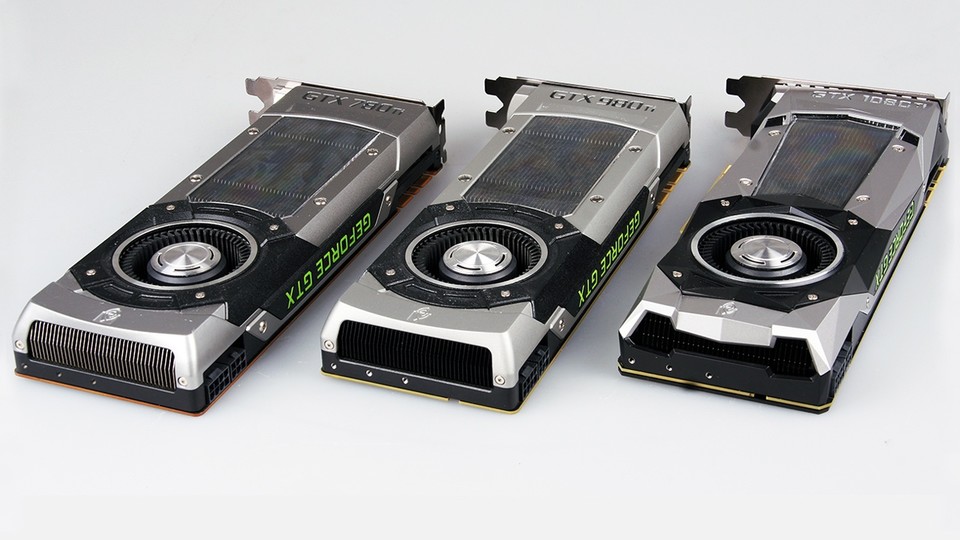 , available either as a standalone program or as a plug-in for 3DS Max, Cinema 4D and many other applications. It renders four different static scenes and then compares the render times to the reference card, which is the GeForce GTX 9 at the moment.80. This benchmark does not measure gaming performance and is intended for professional 3D artists.
, available either as a standalone program or as a plug-in for 3DS Max, Cinema 4D and many other applications. It renders four different static scenes and then compares the render times to the reference card, which is the GeForce GTX 9 at the moment.80. This benchmark does not measure gaming performance and is intended for professional 3D artists. 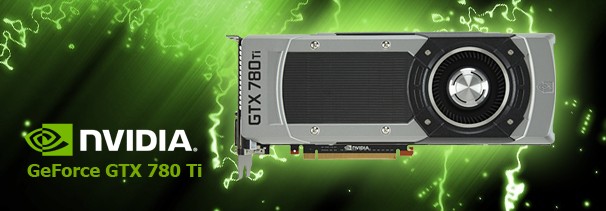

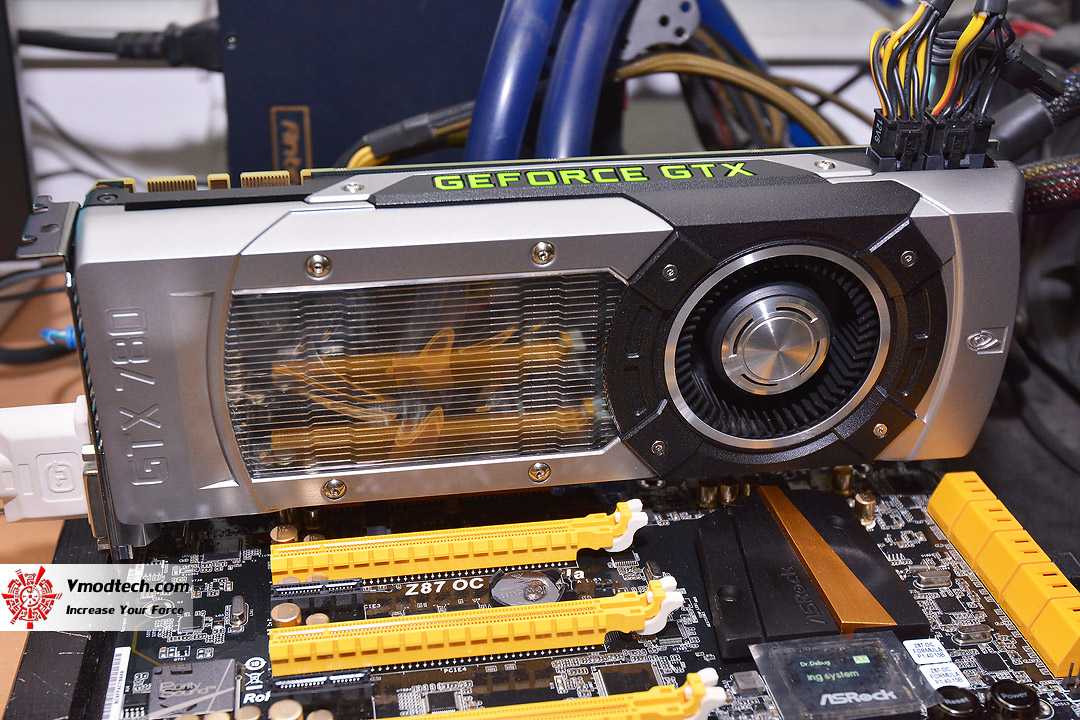 52
52
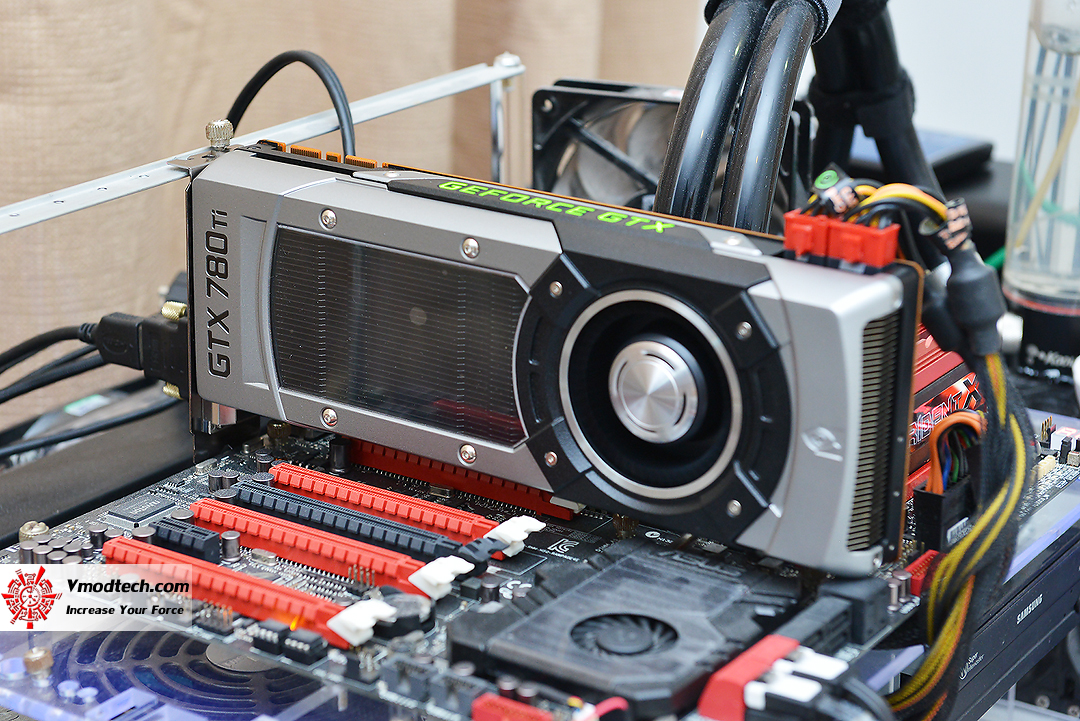
 6%
6%  In turn, this allowed manufacturers to experiment with the graphics core and memory settings, since the NVIDIA GeForce GTX 780 Ti model has excellent overclocking potential, as we ourselves could see in practice.
In turn, this allowed manufacturers to experiment with the graphics core and memory settings, since the NVIDIA GeForce GTX 780 Ti model has excellent overclocking potential, as we ourselves could see in practice.  2 (Shader Model 5.0), OpenGL 4.4, NVIDIA GPU Boost 2.0, NVIDIA TXAA, NVIDIA FXAA, NVIDIA Adaptive Vertical Sync, NVIDIA Surround, NVIDIA PhysX, NVIDIA 3D Vision, 3-way NVIDIA SLI, NVIDIA CUDA
2 (Shader Model 5.0), OpenGL 4.4, NVIDIA GPU Boost 2.0, NVIDIA TXAA, NVIDIA FXAA, NVIDIA Adaptive Vertical Sync, NVIDIA Surround, NVIDIA PhysX, NVIDIA 3D Vision, 3-way NVIDIA SLI, NVIDIA CUDA  Of course, this is the MSI GAMING line of accessories, which is primarily aimed at gamers. In the lower corner, you can find the inscription «OC Edition», which means that this graphics adapter already has factory overclocking.
Of course, this is the MSI GAMING line of accessories, which is primarily aimed at gamers. In the lower corner, you can find the inscription «OC Edition», which means that this graphics adapter already has factory overclocking. 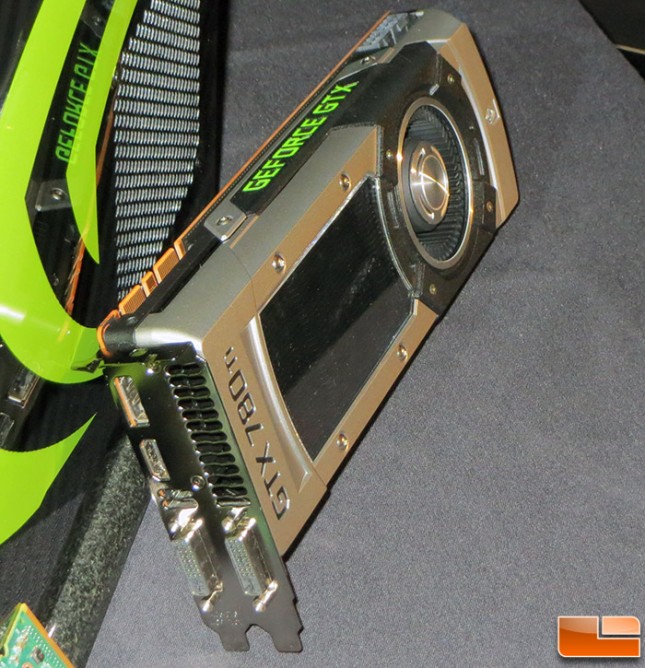
 Almost the entire upper part of the video card is covered with a casing painted in characteristic red and black colors. Owners of system cases with a side window will undoubtedly be pleased with such an aggressive design.
Almost the entire upper part of the video card is covered with a casing painted in characteristic red and black colors. Owners of system cases with a side window will undoubtedly be pleased with such an aggressive design. 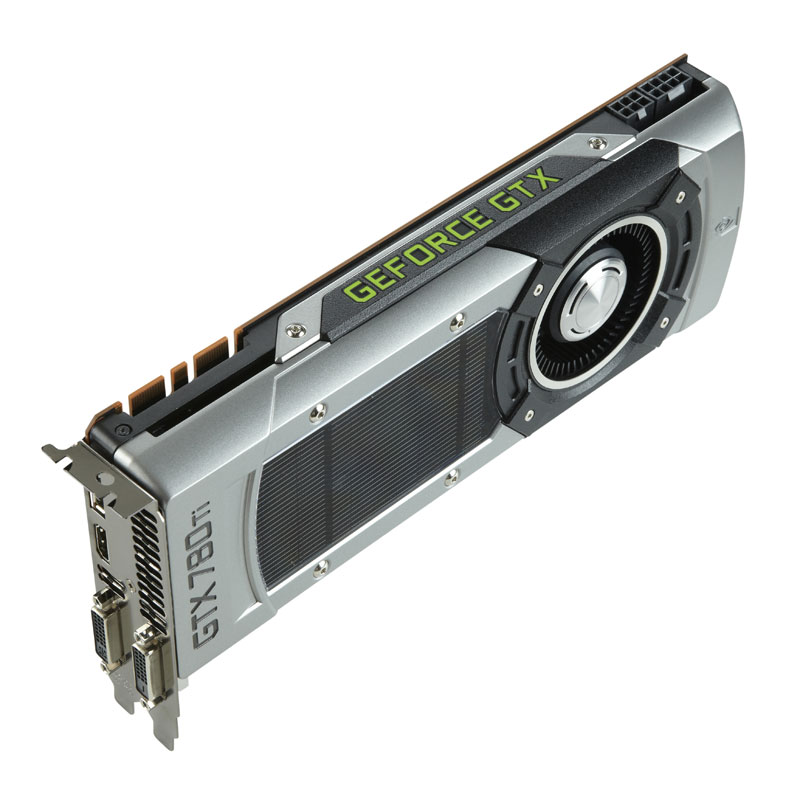

 In the «reference» model, these values are 876 MHz and 928 MHz, respectively. As you can see, MSI employees did a pretty good job of optimizing the settings and achieved an increase in the nominal frequency of the graphics core at the level of 16.4%.
In the «reference» model, these values are 876 MHz and 928 MHz, respectively. As you can see, MSI employees did a pretty good job of optimizing the settings and achieved an increase in the nominal frequency of the graphics core at the level of 16.4%. 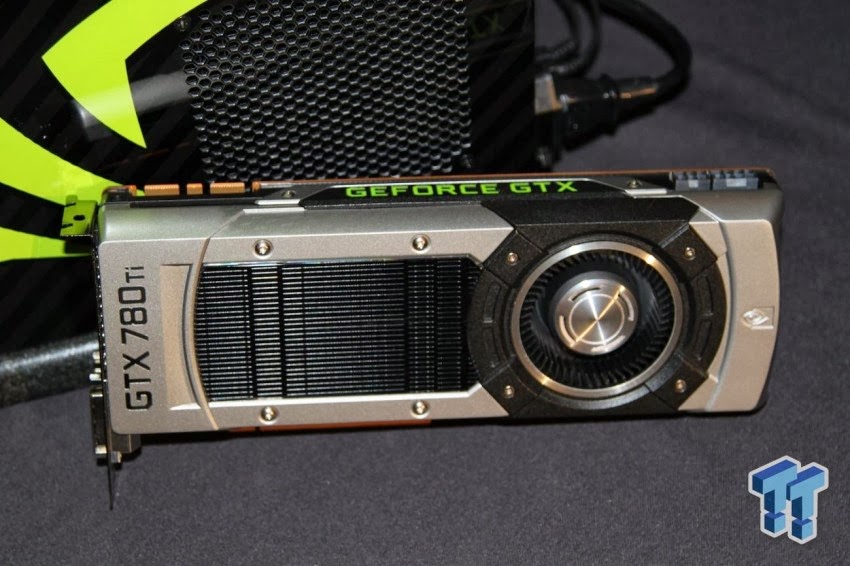 The radiator impresses with its dimensions. It includes 5 heat pipes (the 2 outer ones have a diameter of 8 mm, and the rest — 6 mm), which penetrate 53 aluminum plates.
The radiator impresses with its dimensions. It includes 5 heat pipes (the 2 outer ones have a diameter of 8 mm, and the rest — 6 mm), which penetrate 53 aluminum plates.  This fact allows us to hope for good temperature performance during the operation of the video card. Recall that the standard «turbine» on the reference version of the NVIDIA GeForce GTX 780 Ti did not cope well with the cooling of the graphics core.
This fact allows us to hope for good temperature performance during the operation of the video card. Recall that the standard «turbine» on the reference version of the NVIDIA GeForce GTX 780 Ti did not cope well with the cooling of the graphics core. 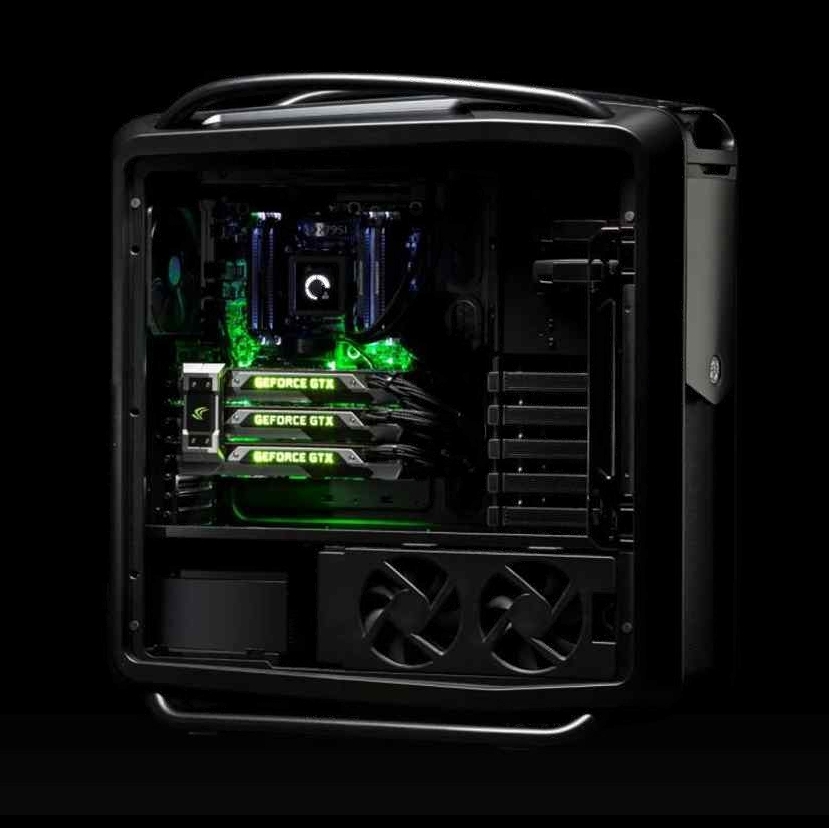
 1.0 Video card developer: NVIDIA , Line:
1.0 Video card developer: NVIDIA , Line: 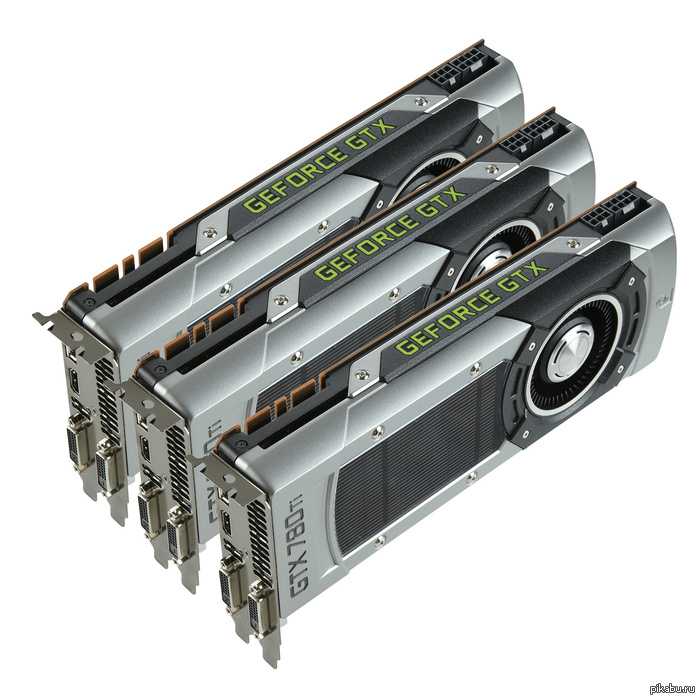 I had to do something and somehow change the situation in my favor. We needed a special model that would do the flagship — AMD Radeon R9290X and removed it from the list of competitors.
I had to do something and somehow change the situation in my favor. We needed a special model that would do the flagship — AMD Radeon R9290X and removed it from the list of competitors. 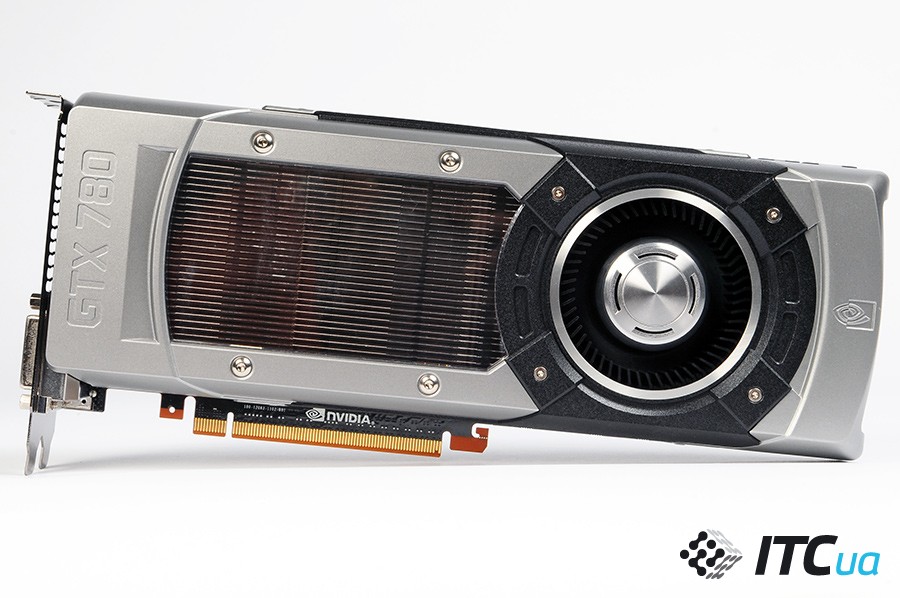 It is much more powerful, especially in terms of shader instructions and texturing.
It is much more powerful, especially in terms of shader instructions and texturing.  3
3  1 billion
1 billion  4a,
4a,